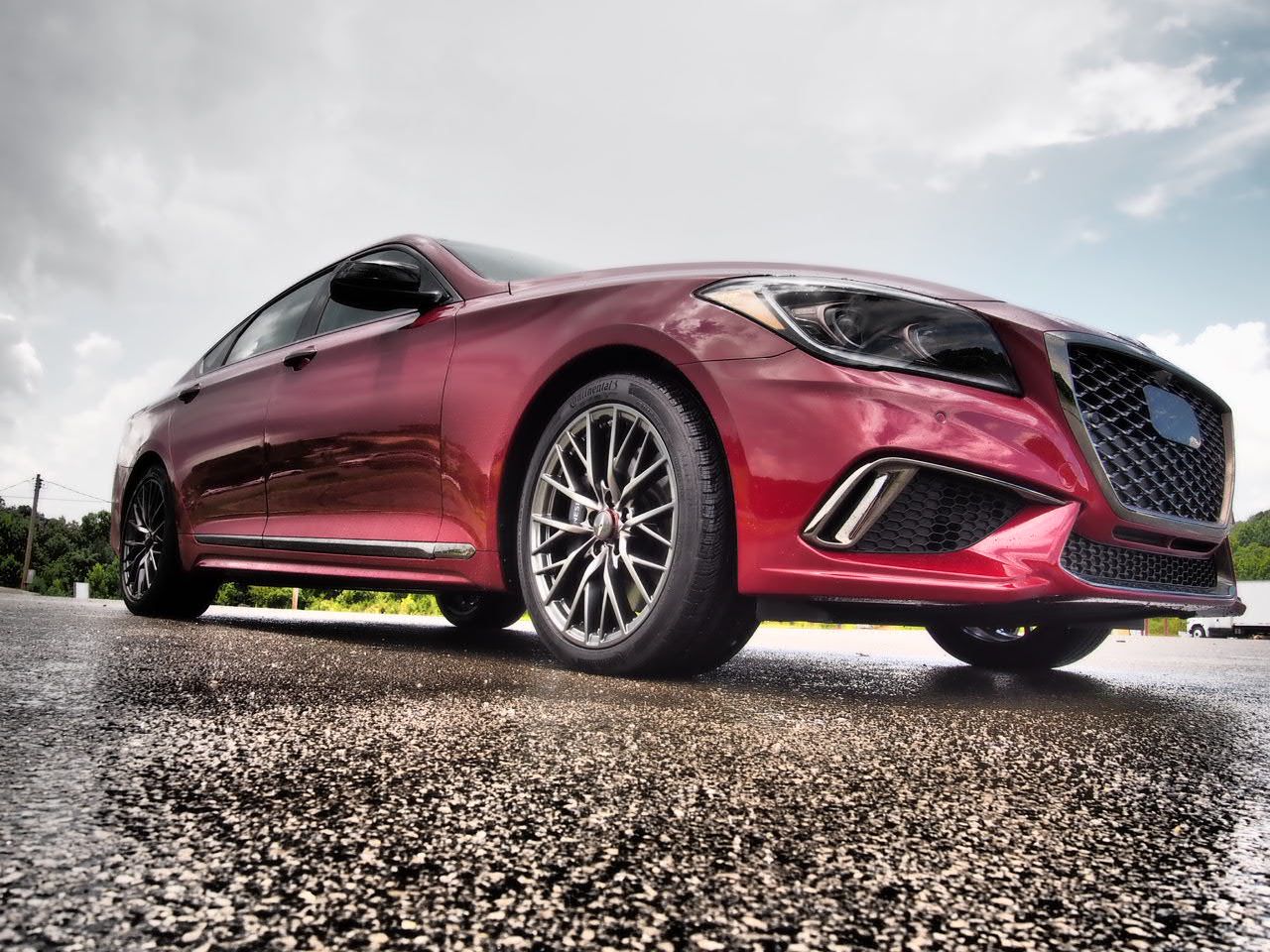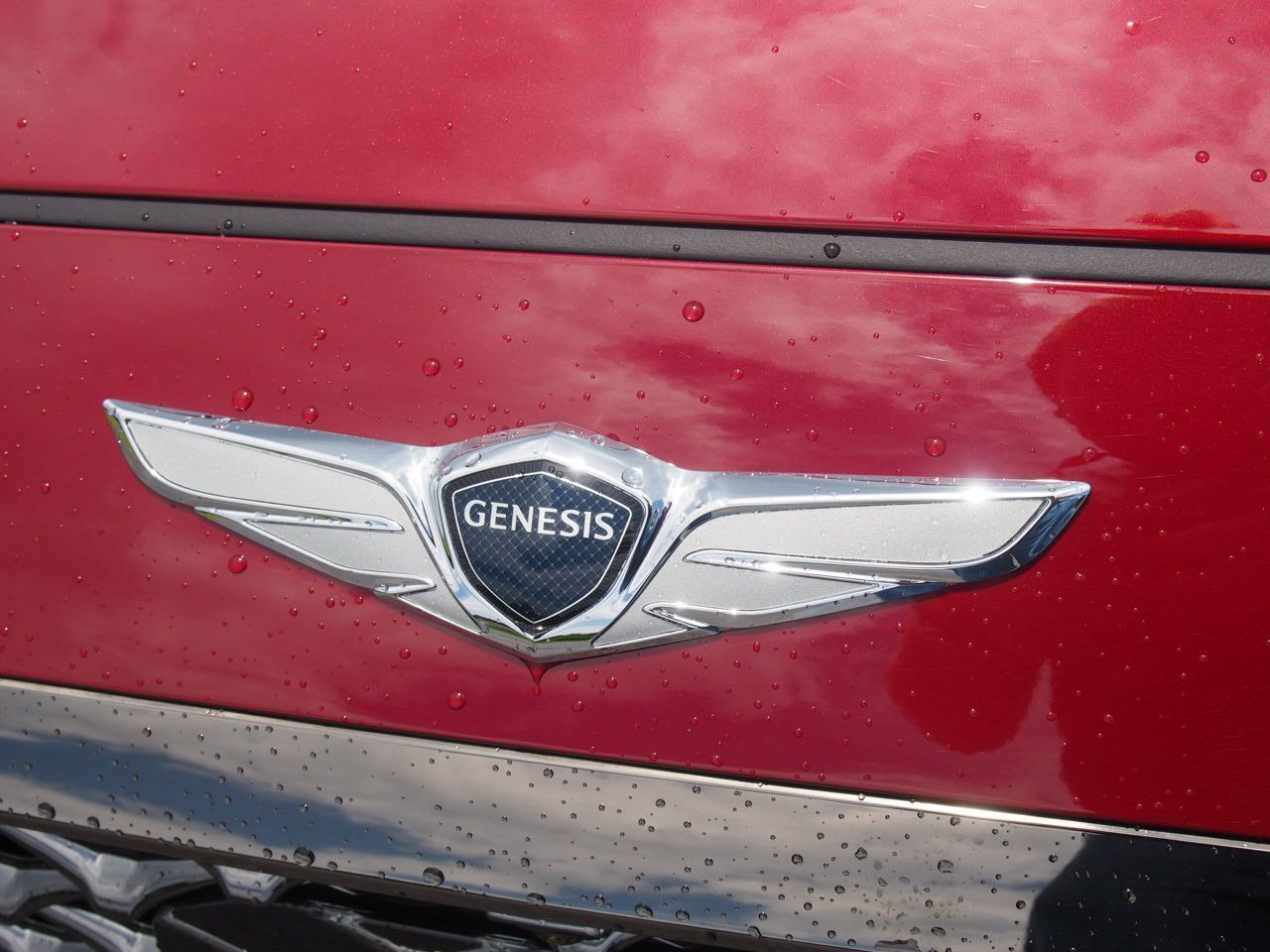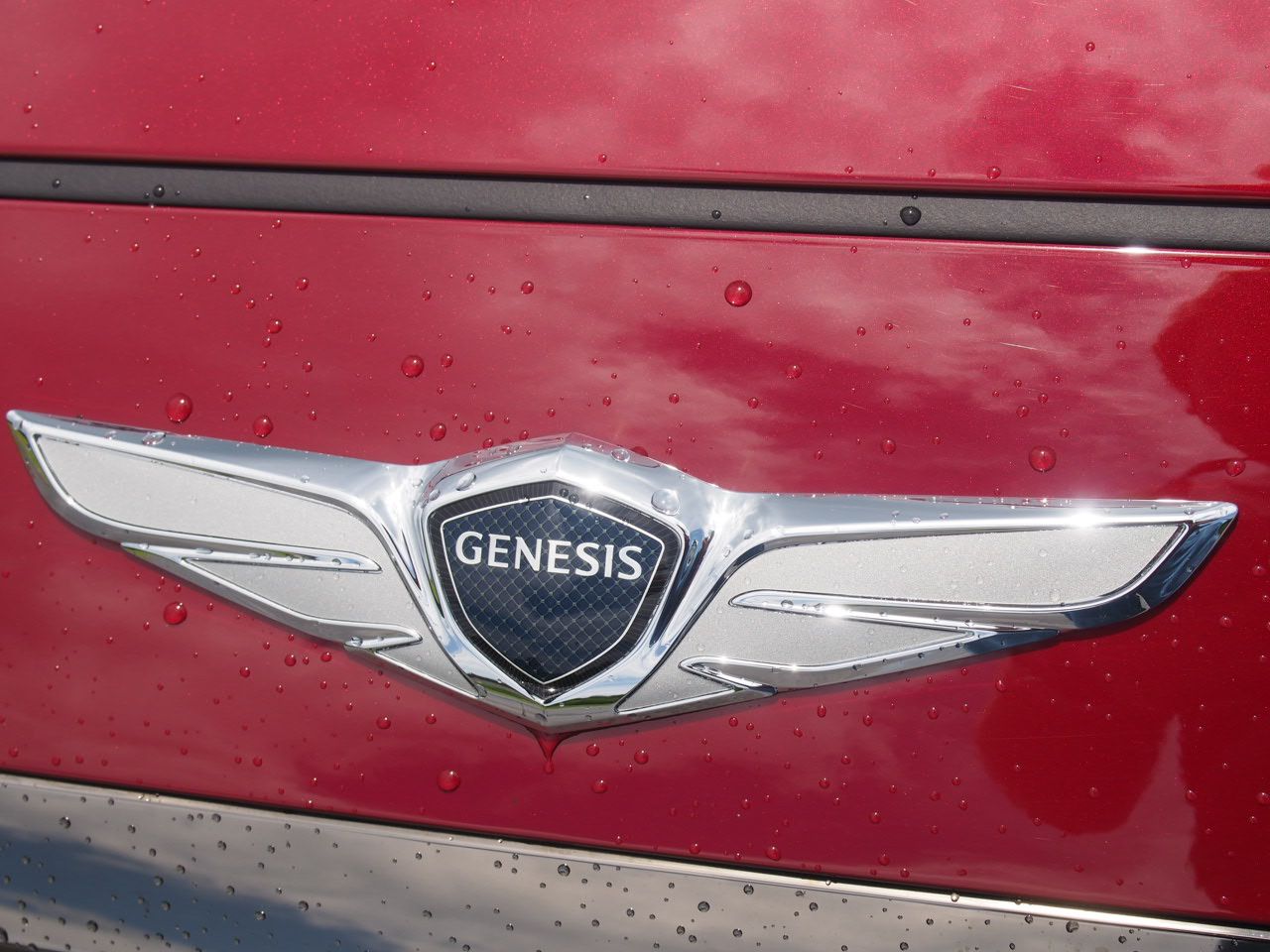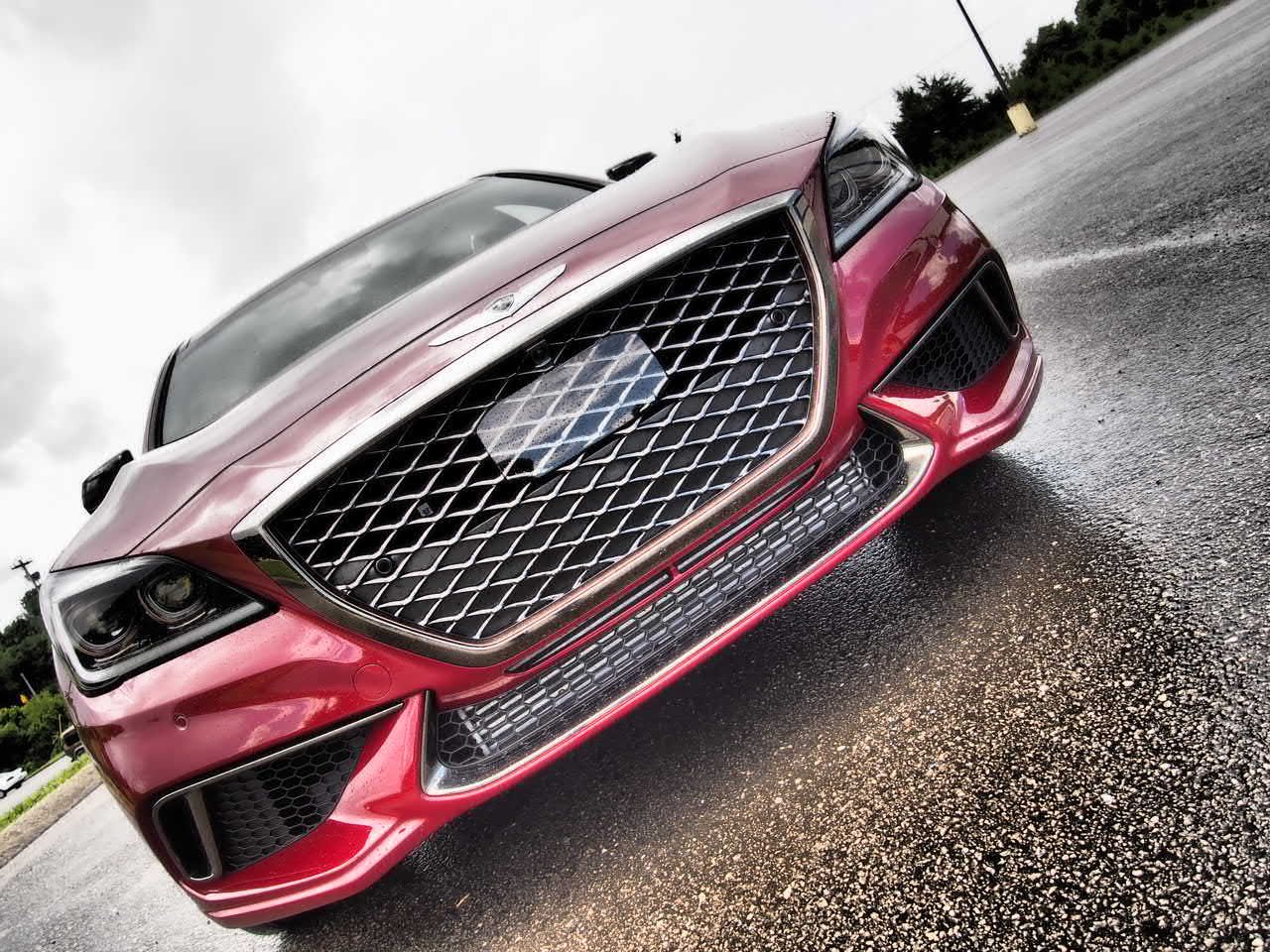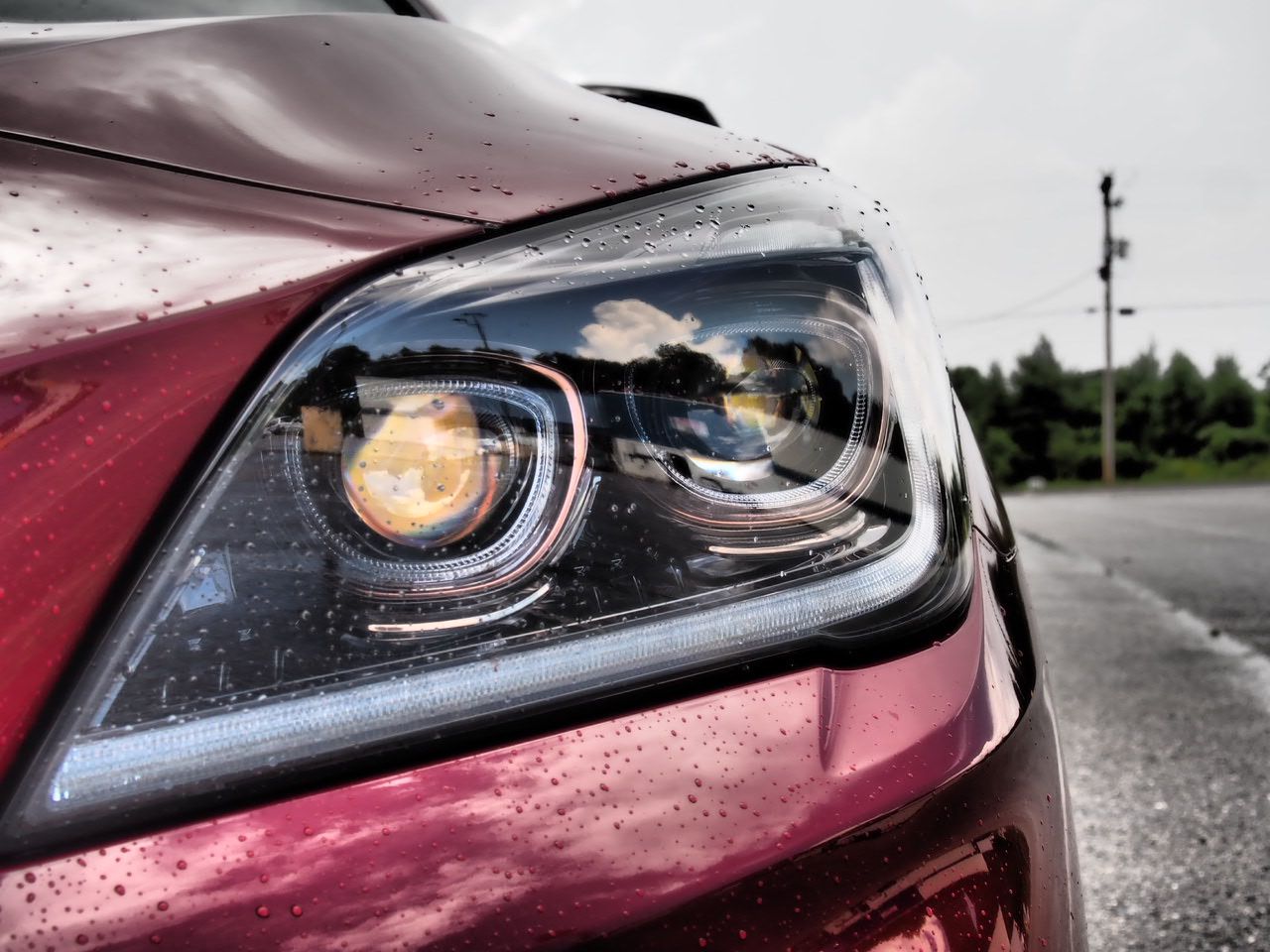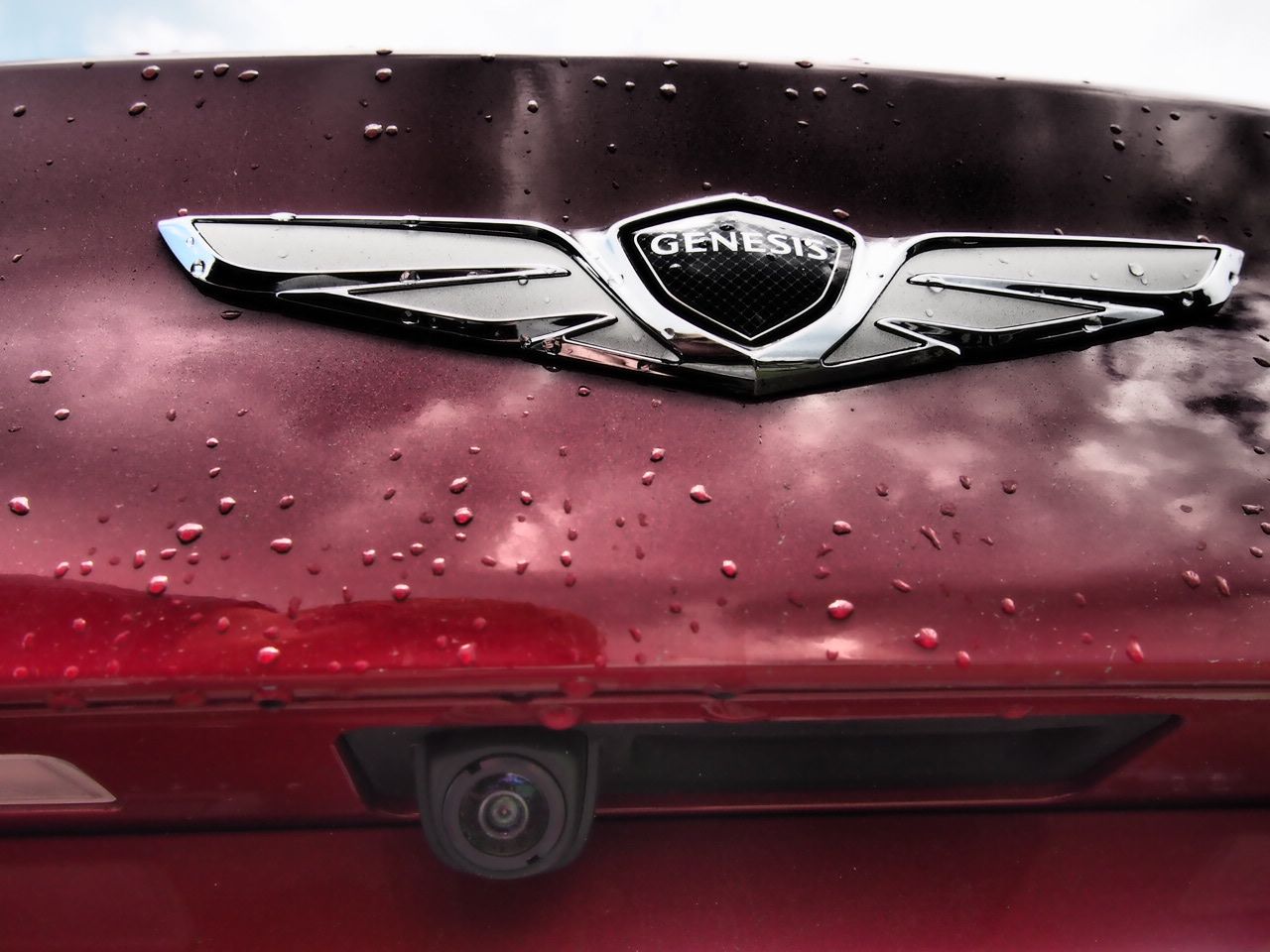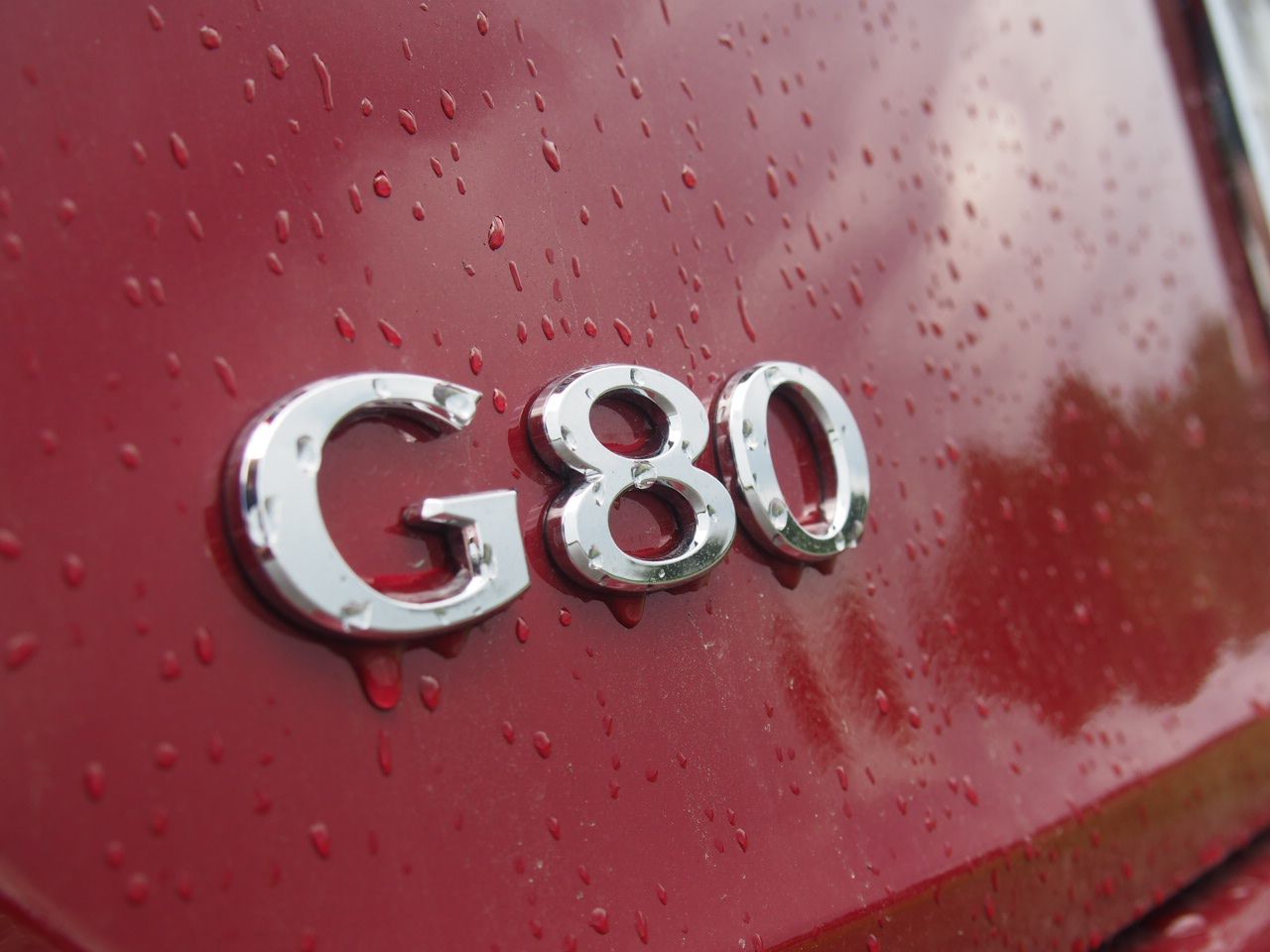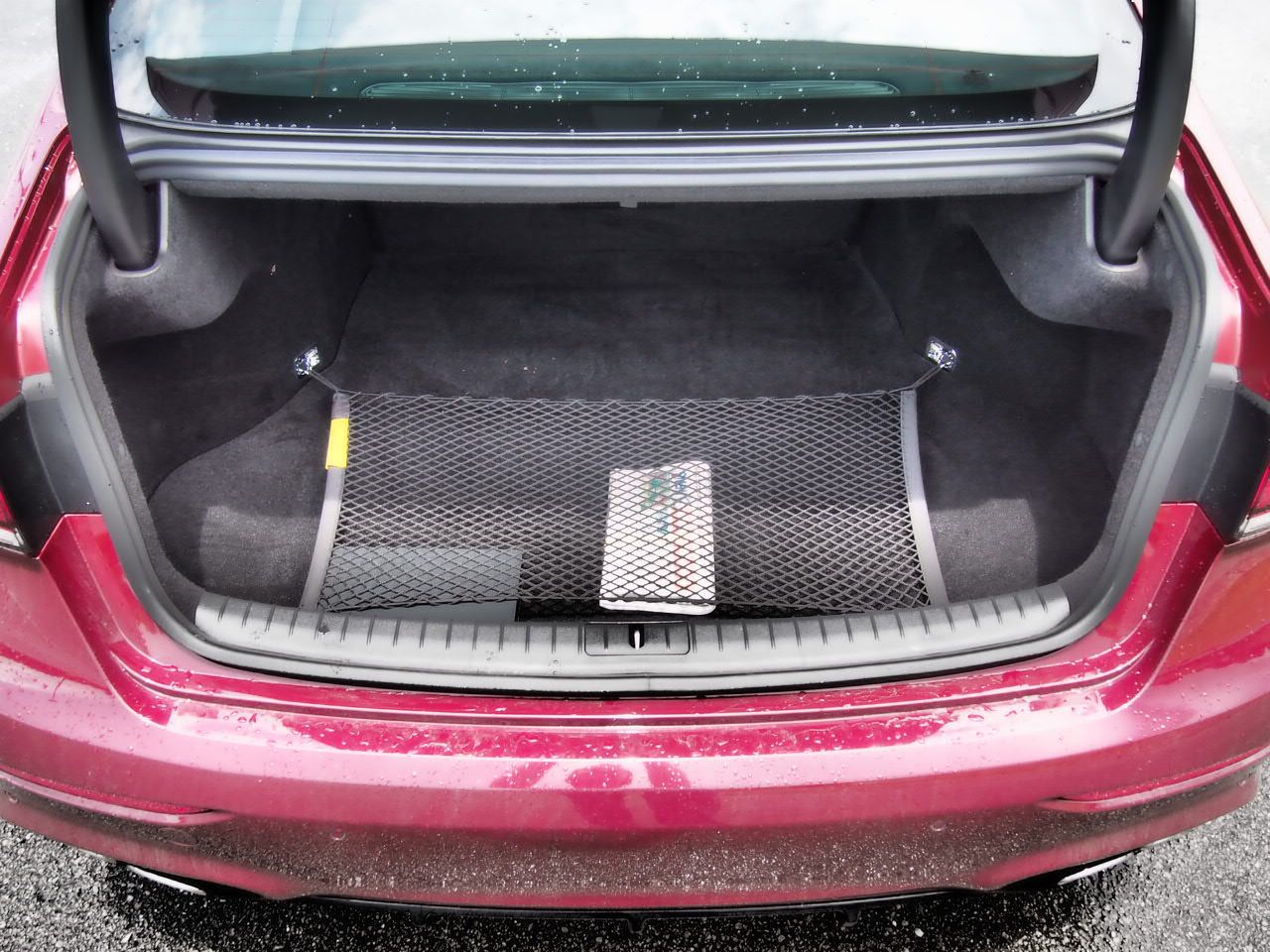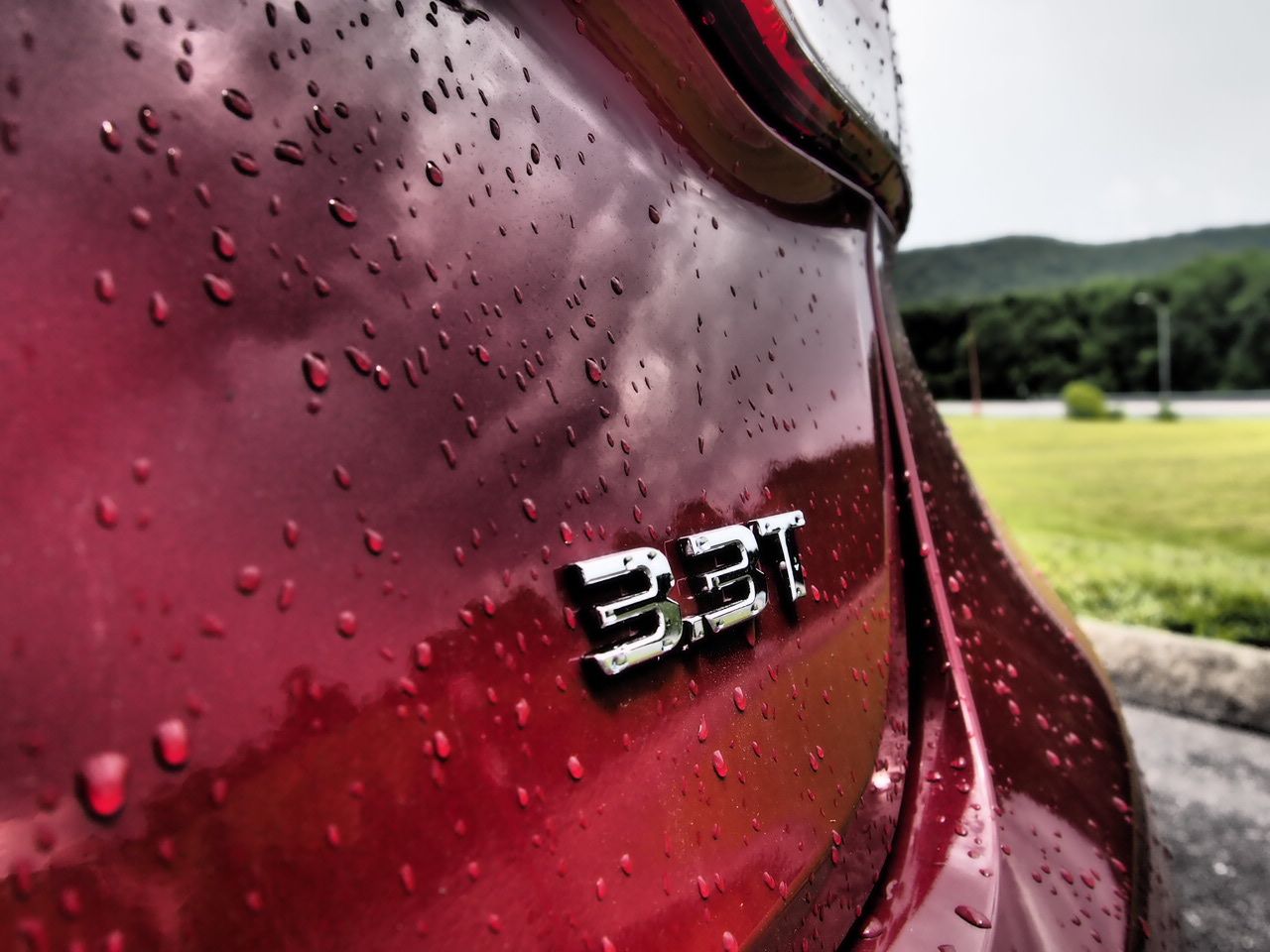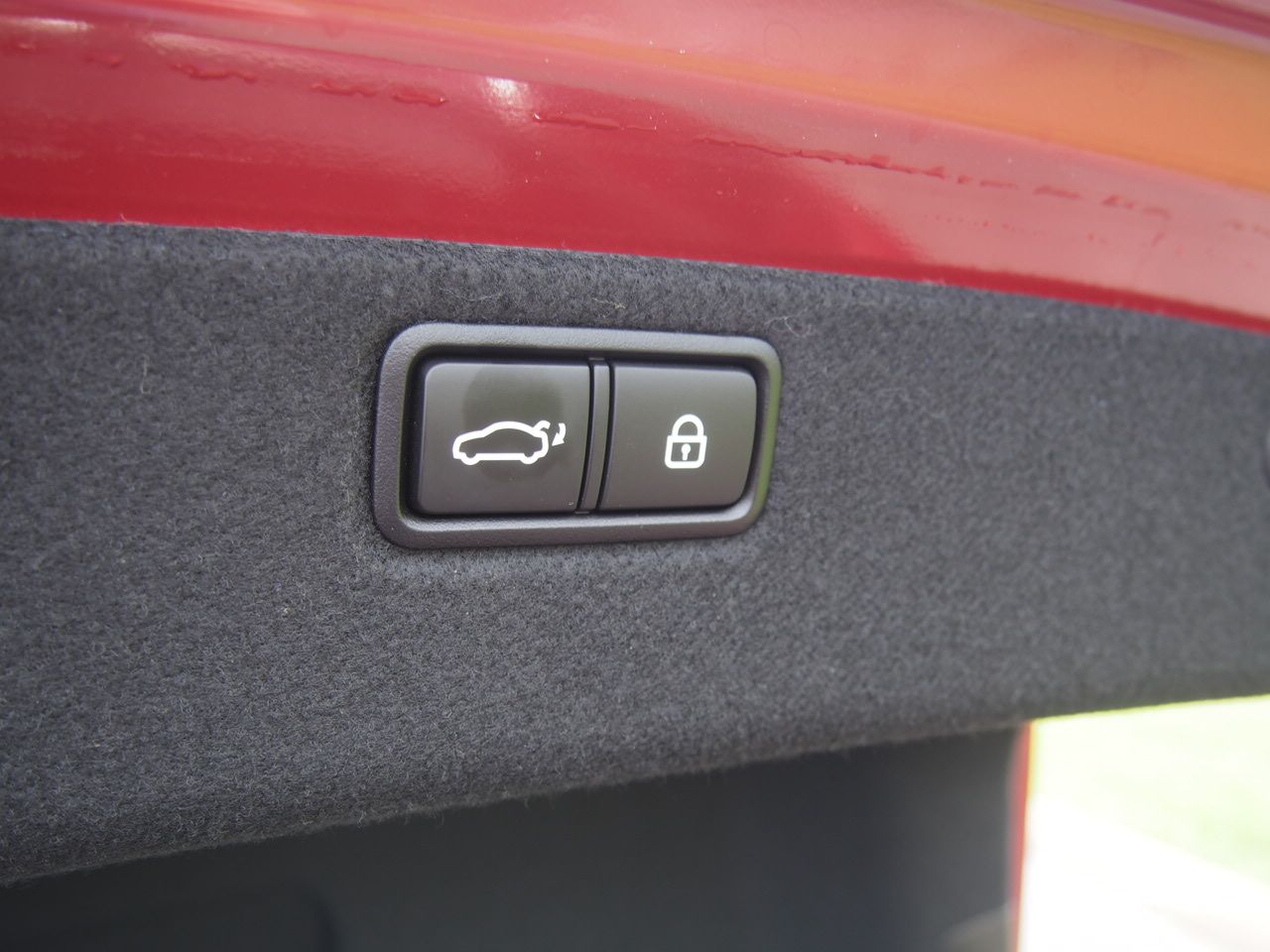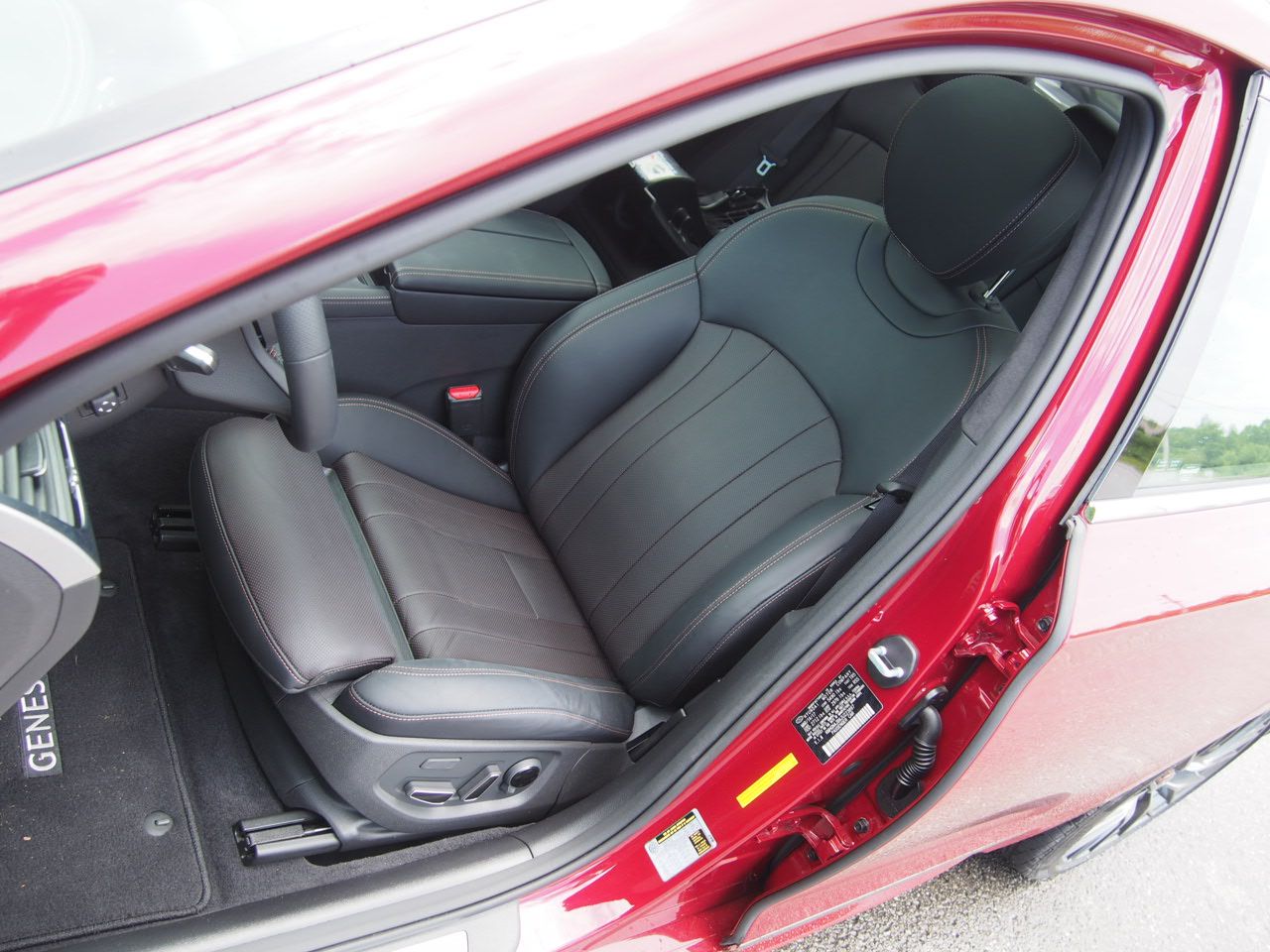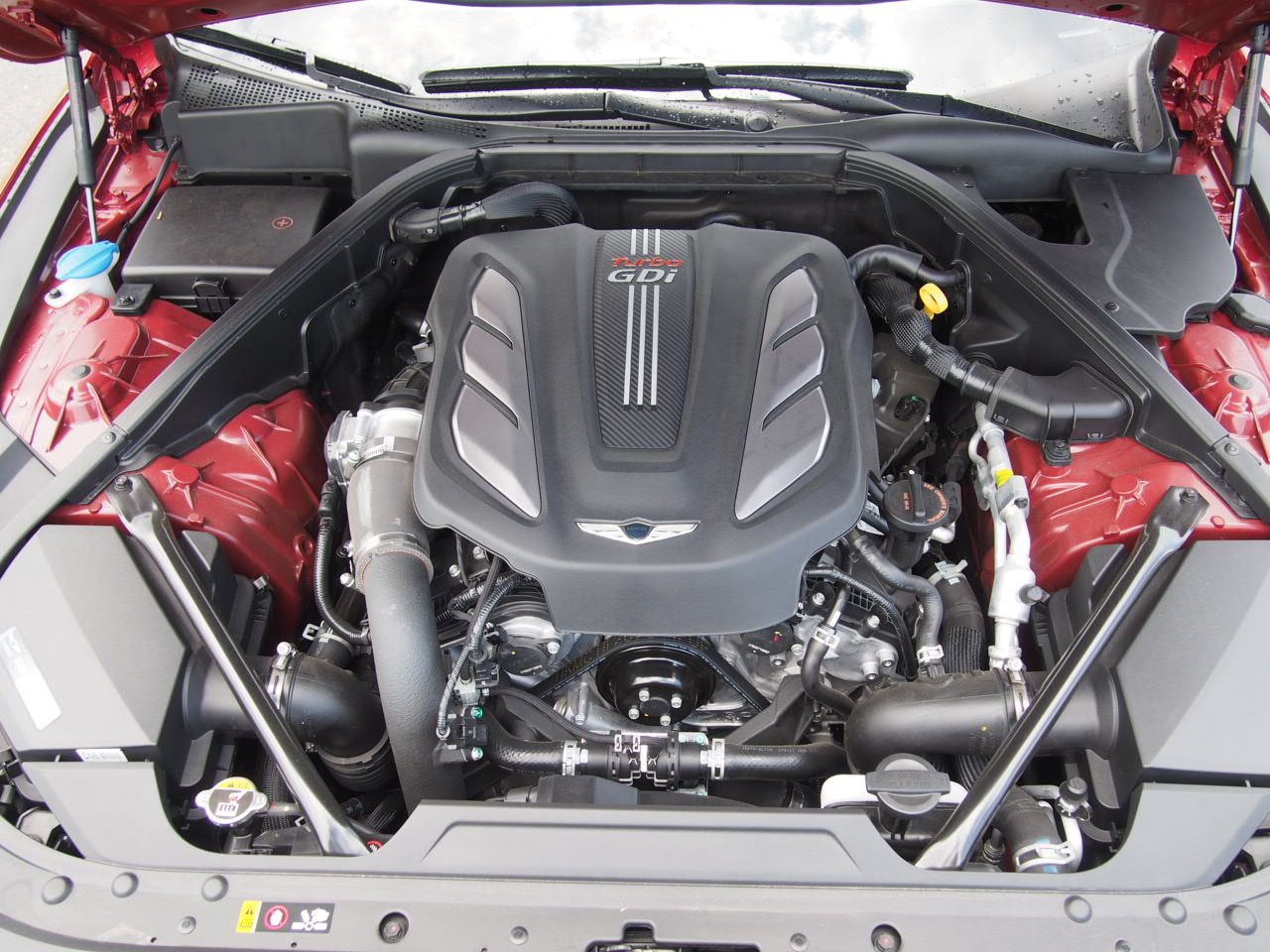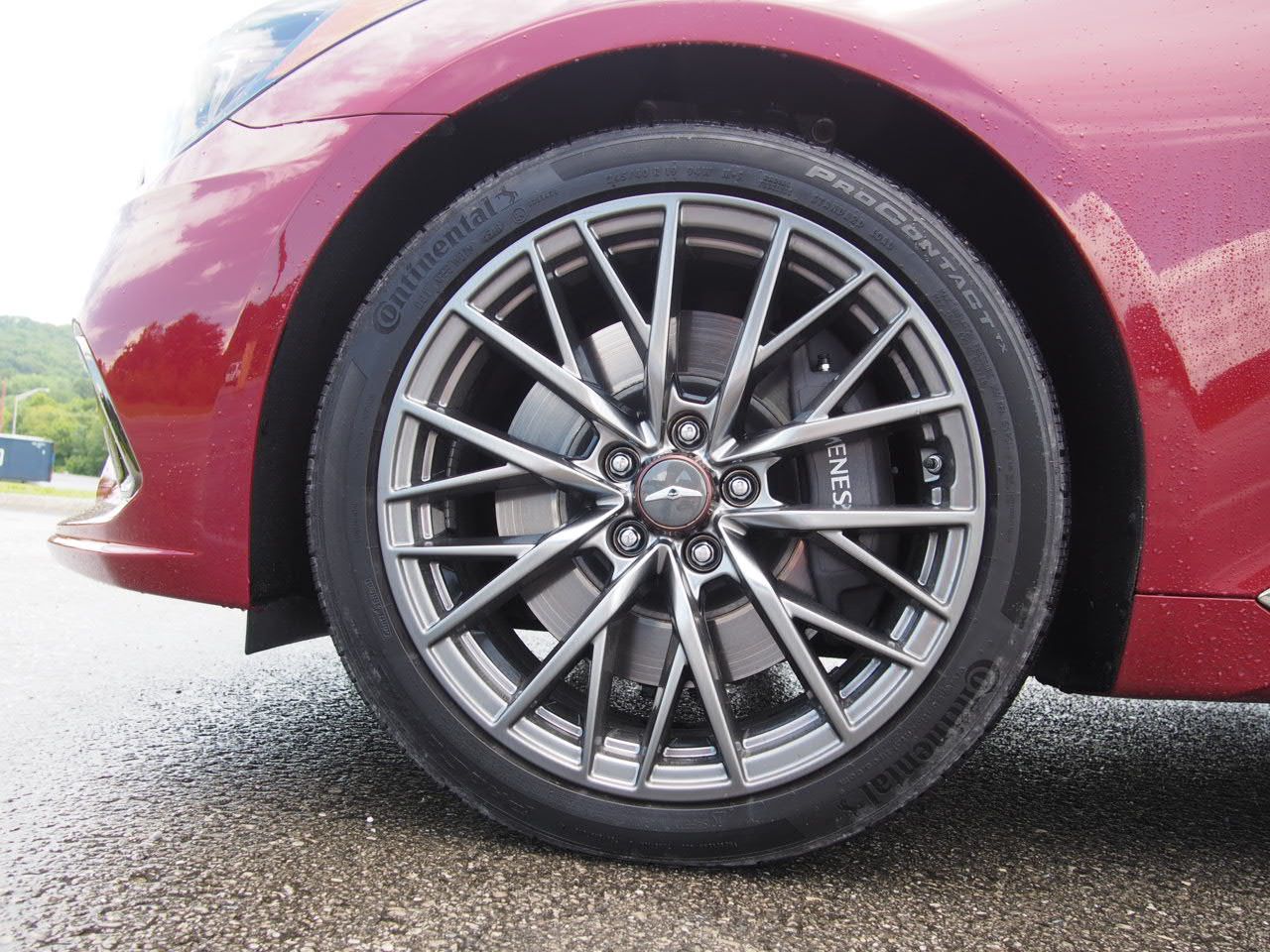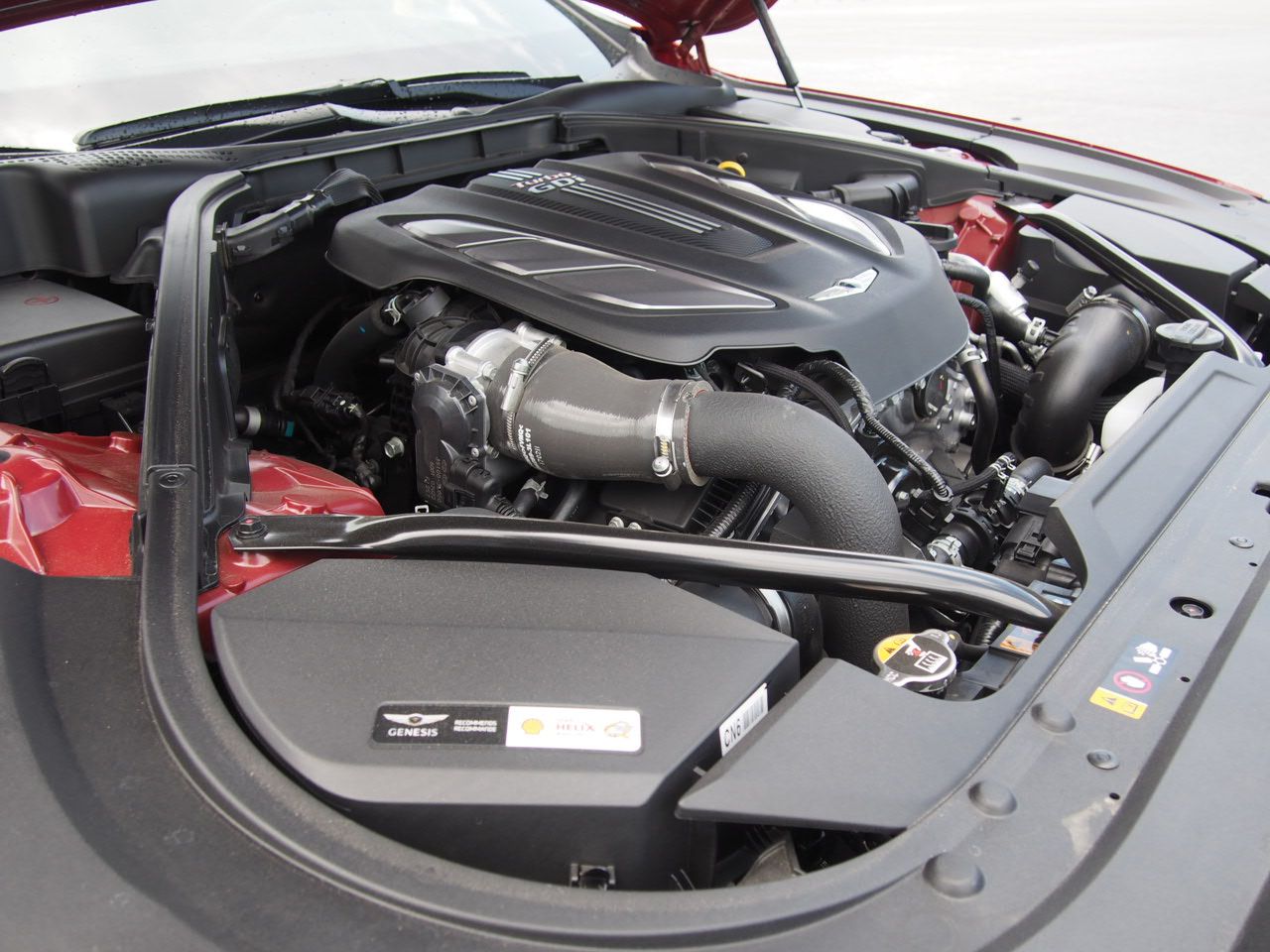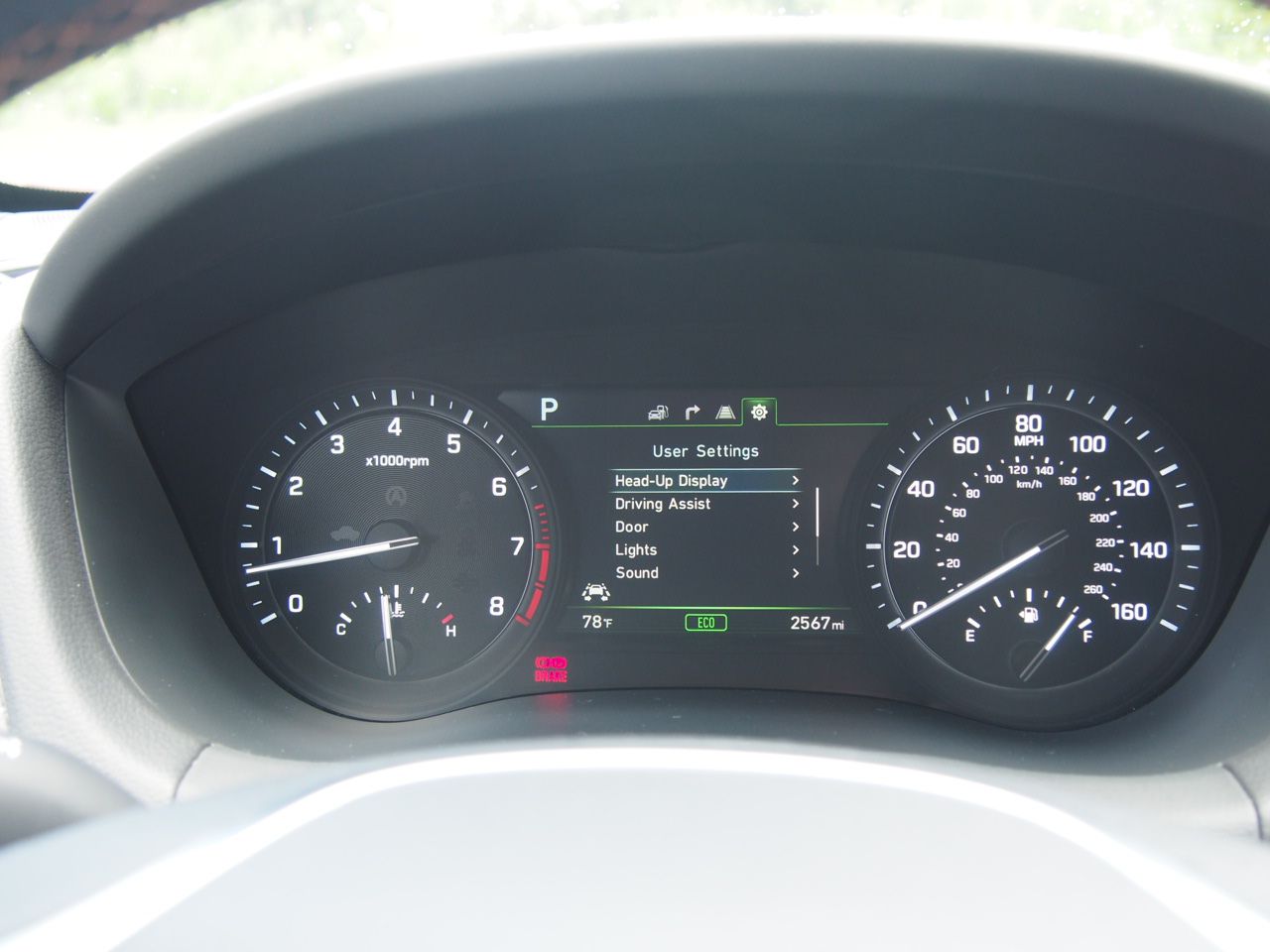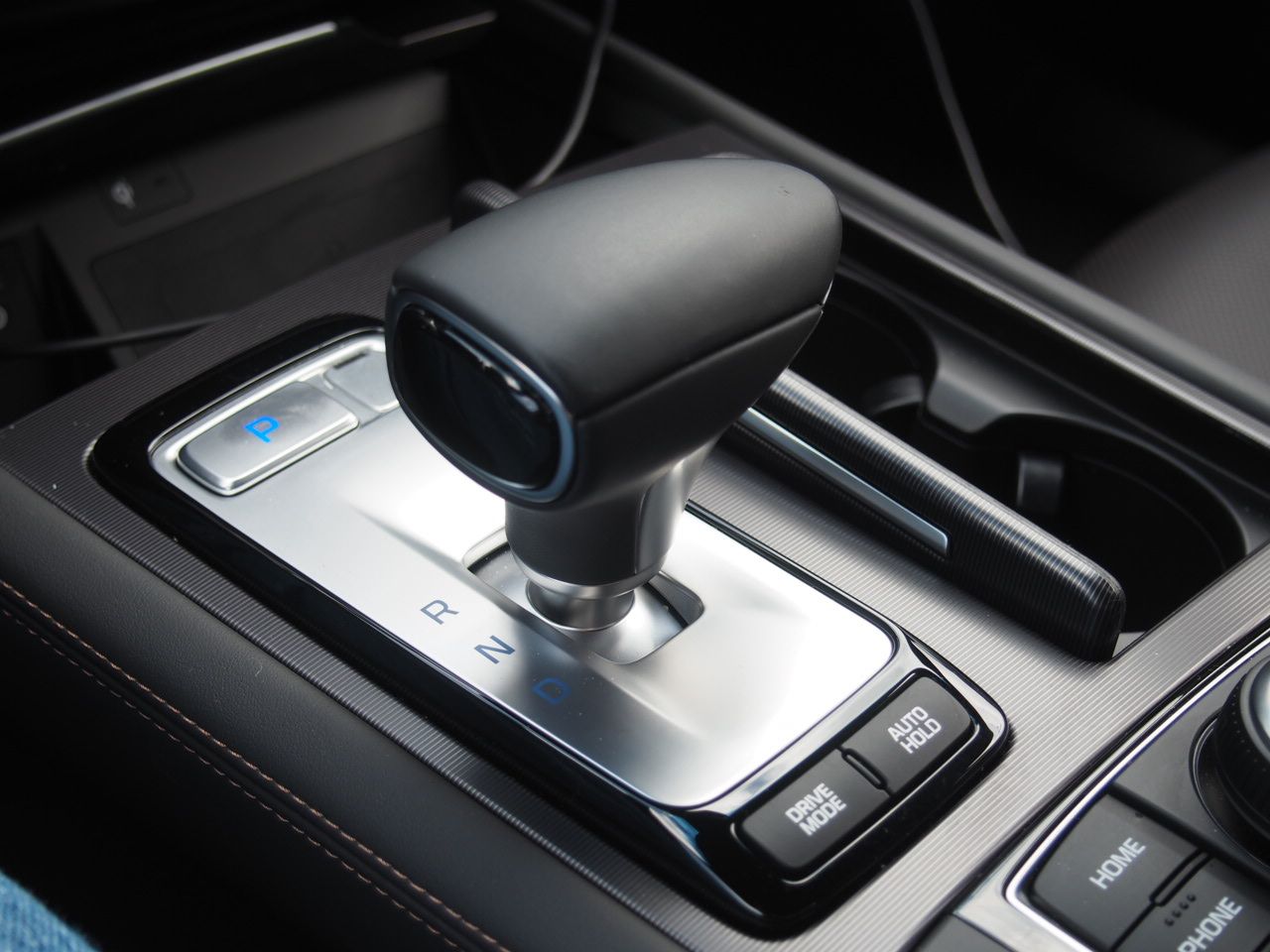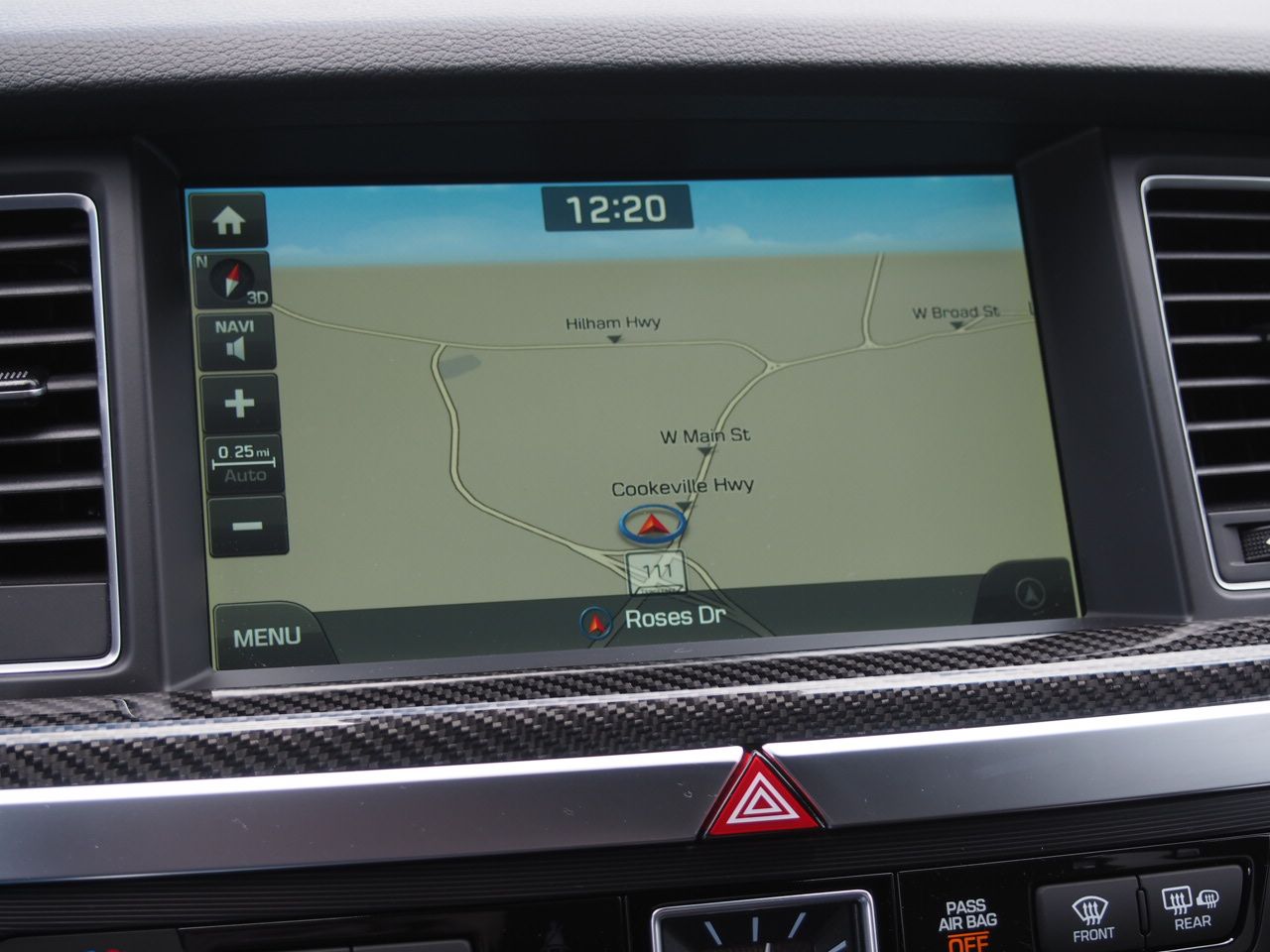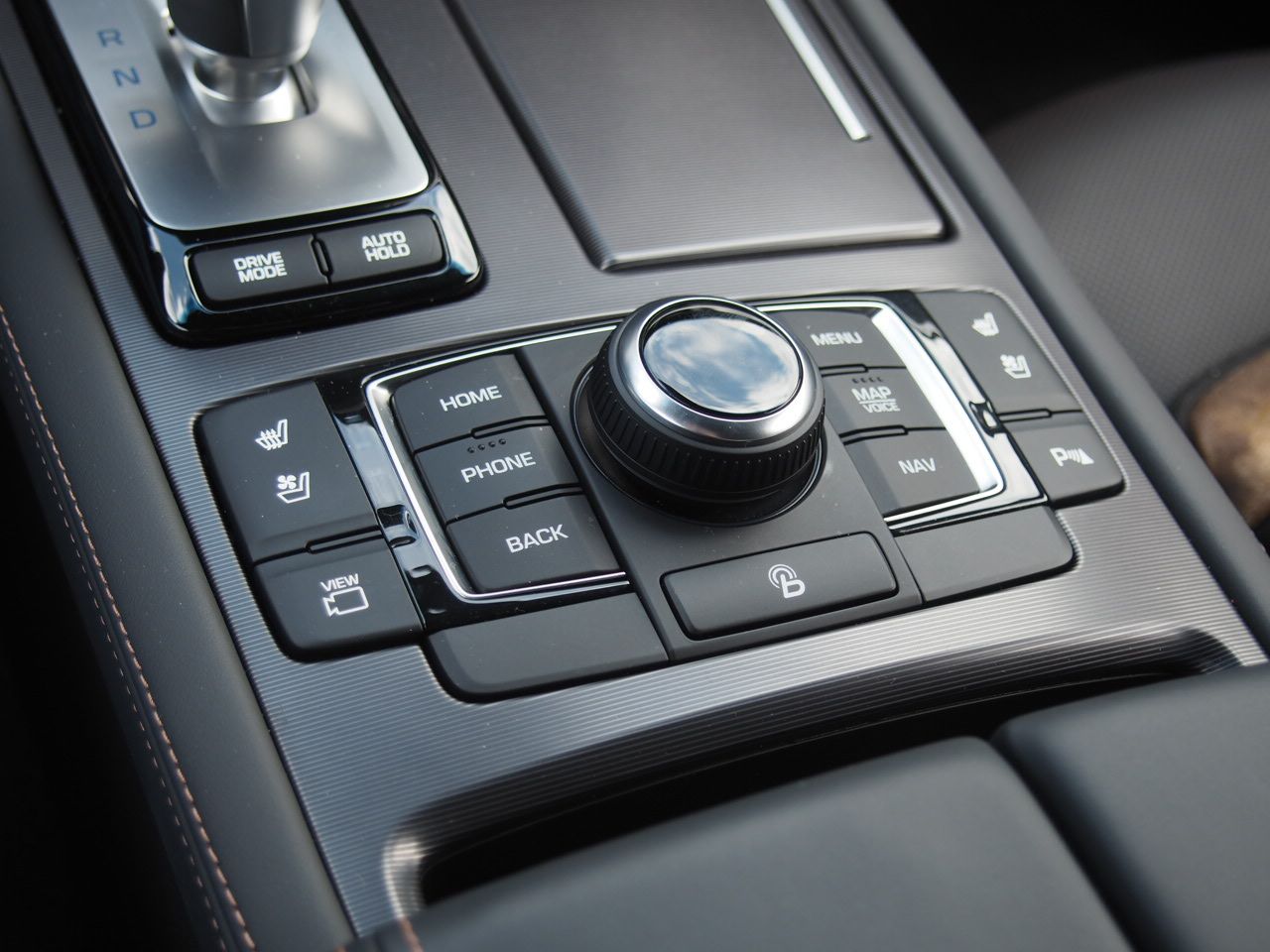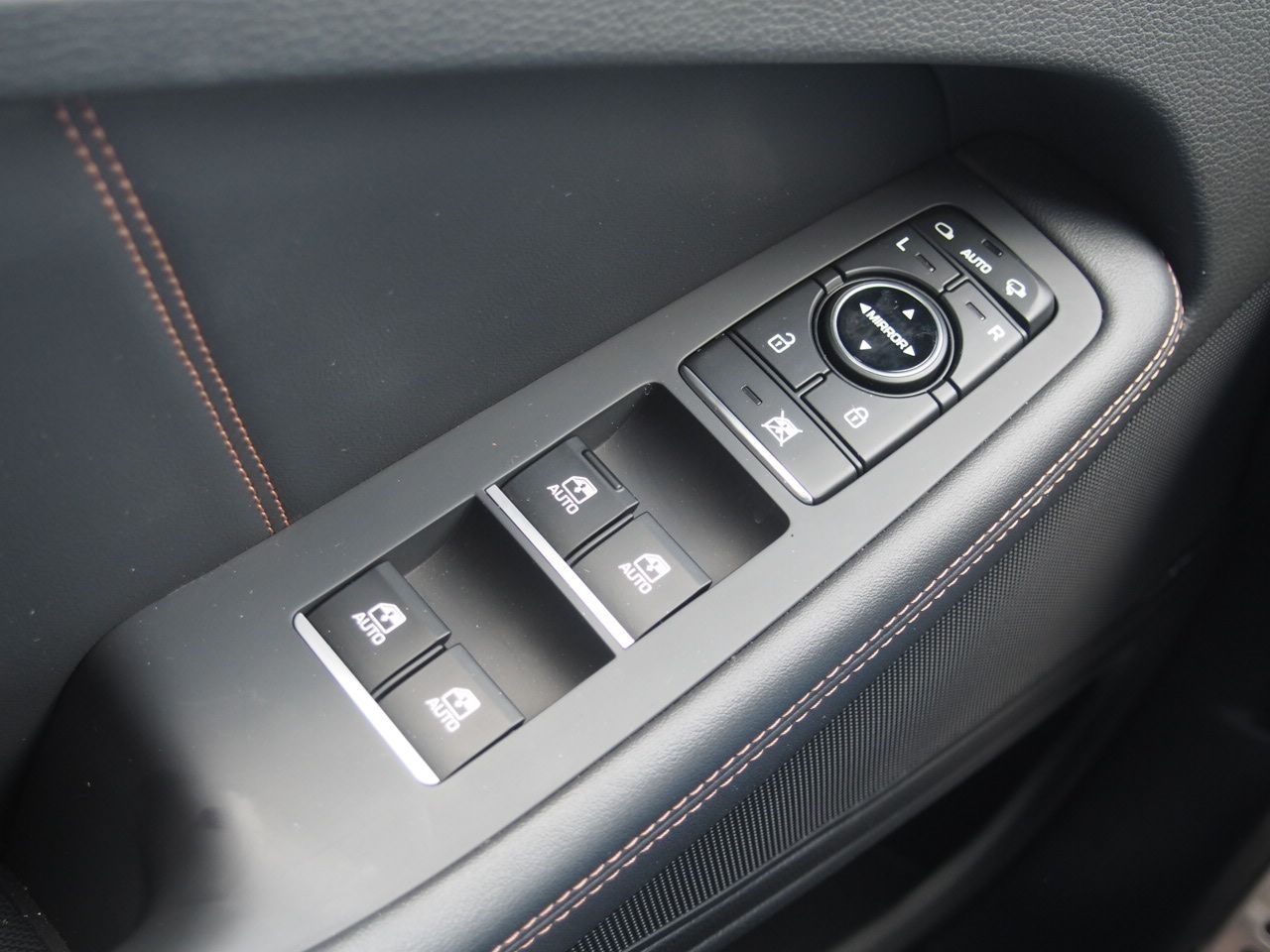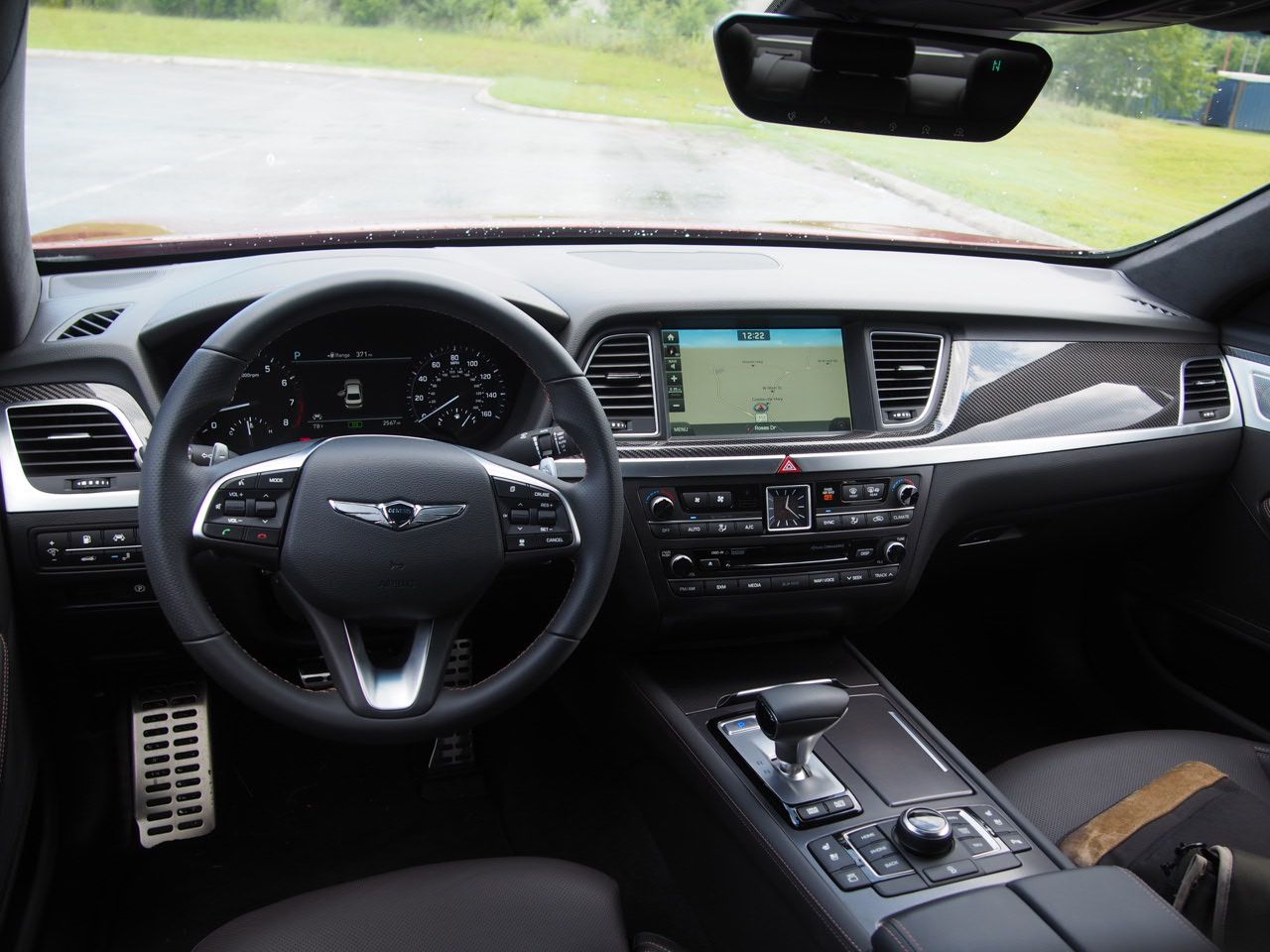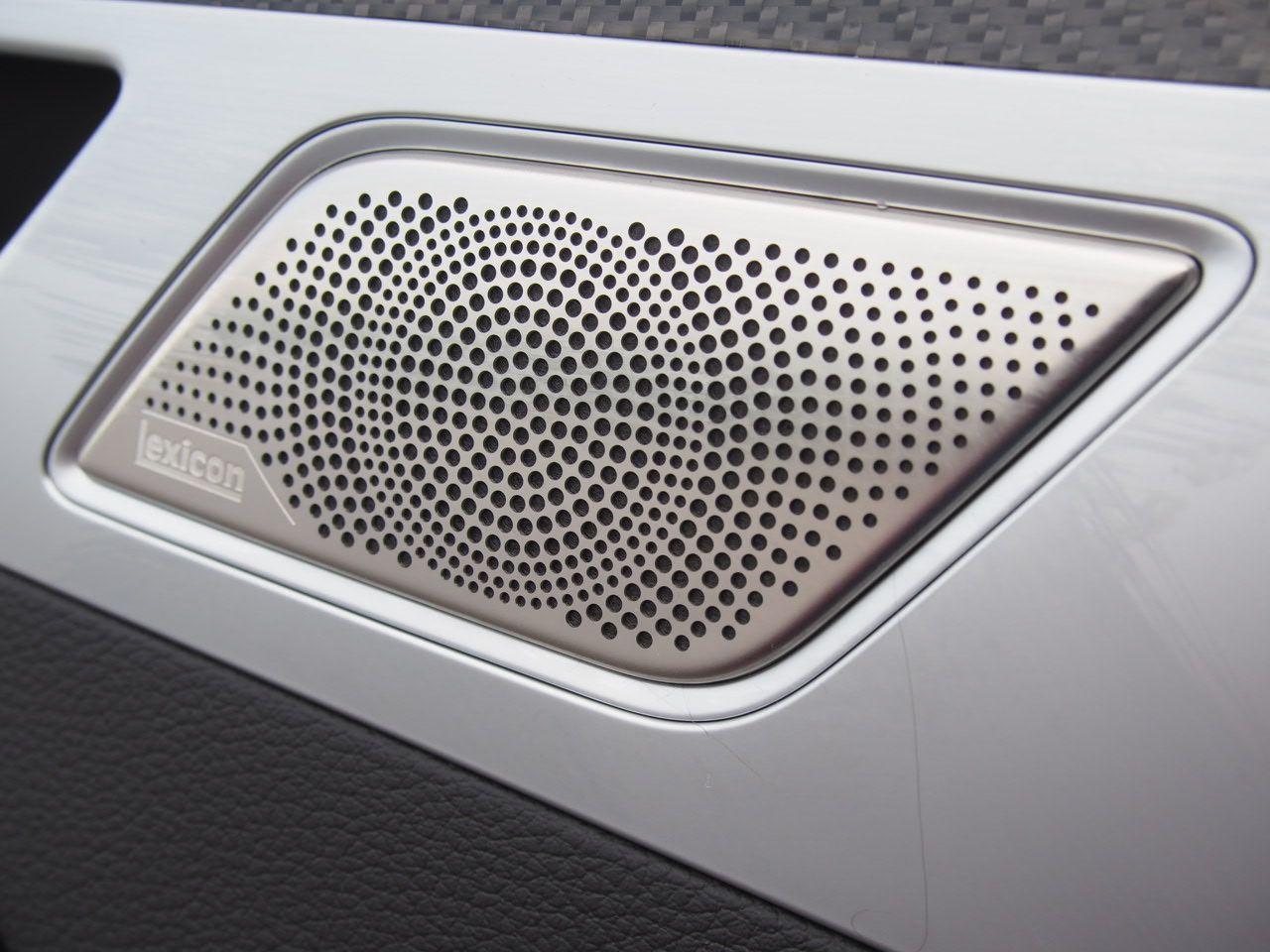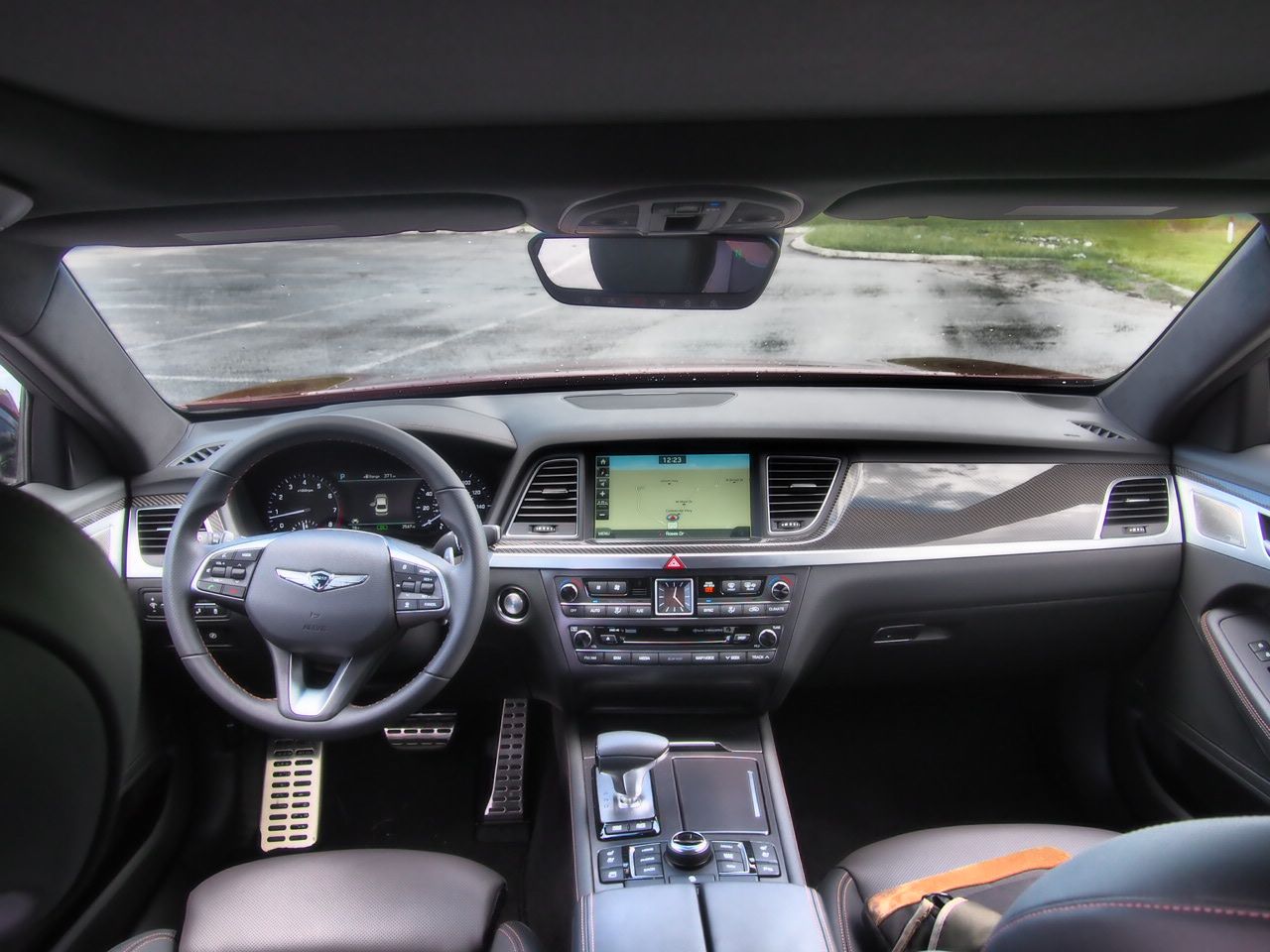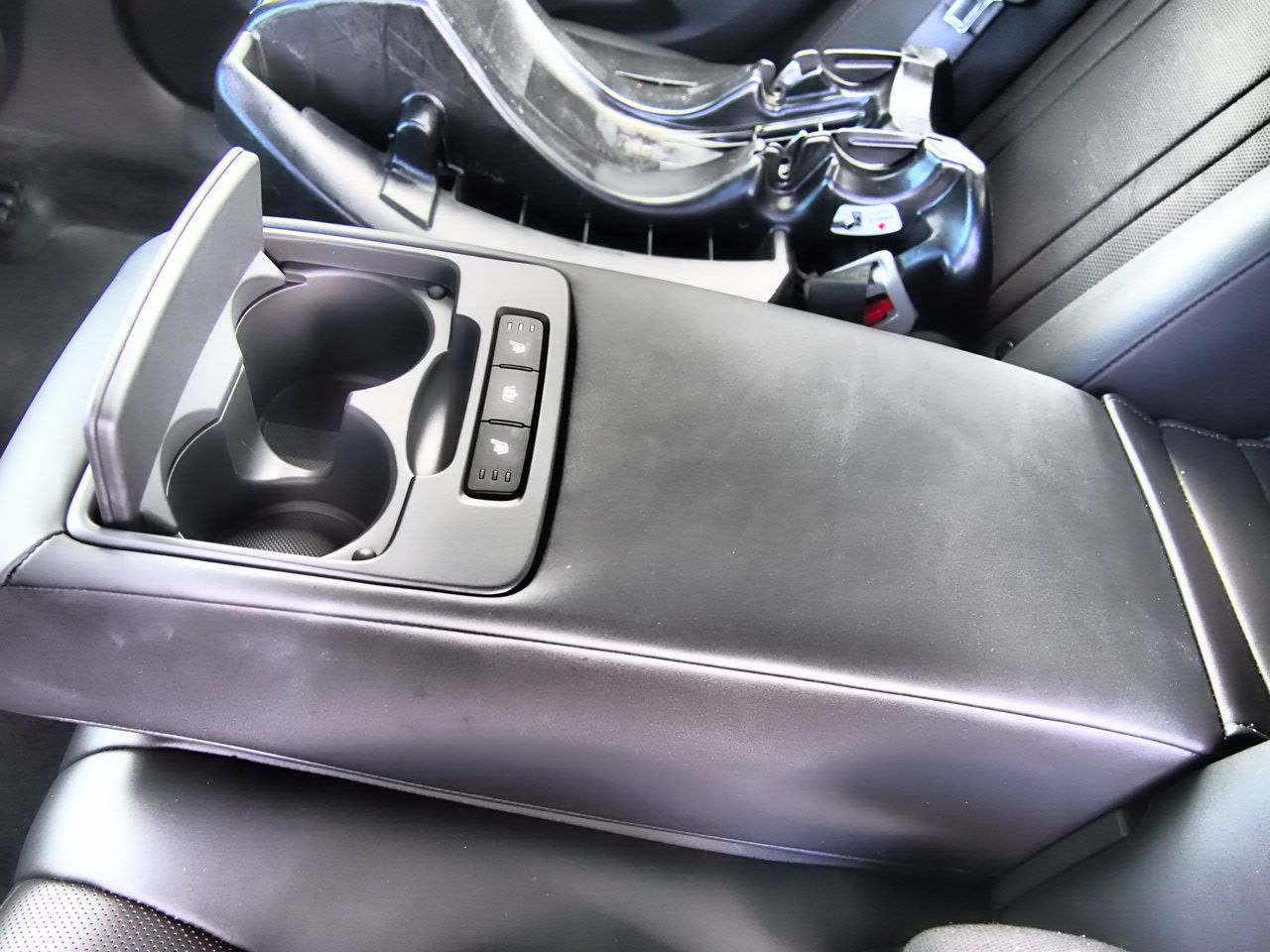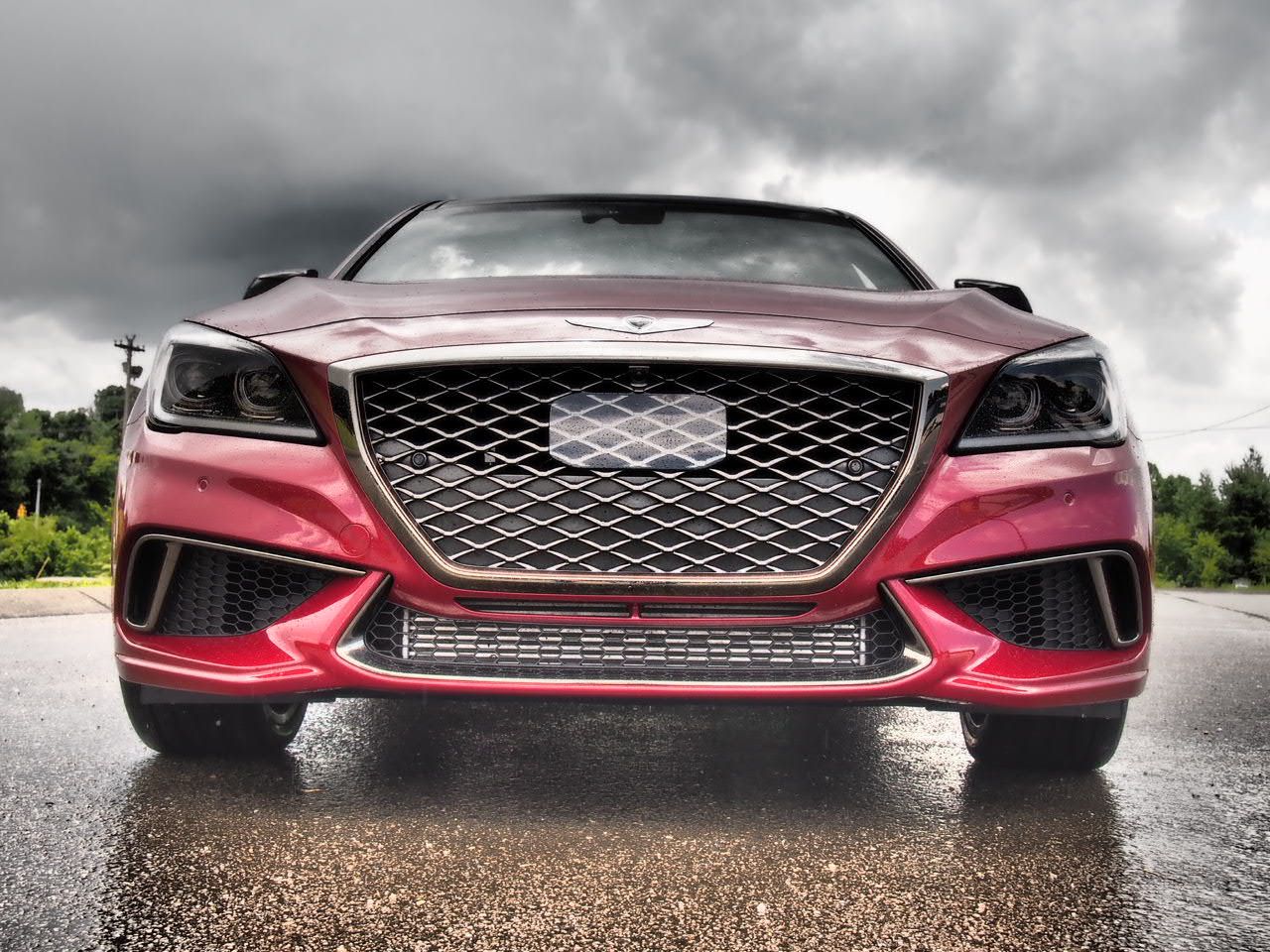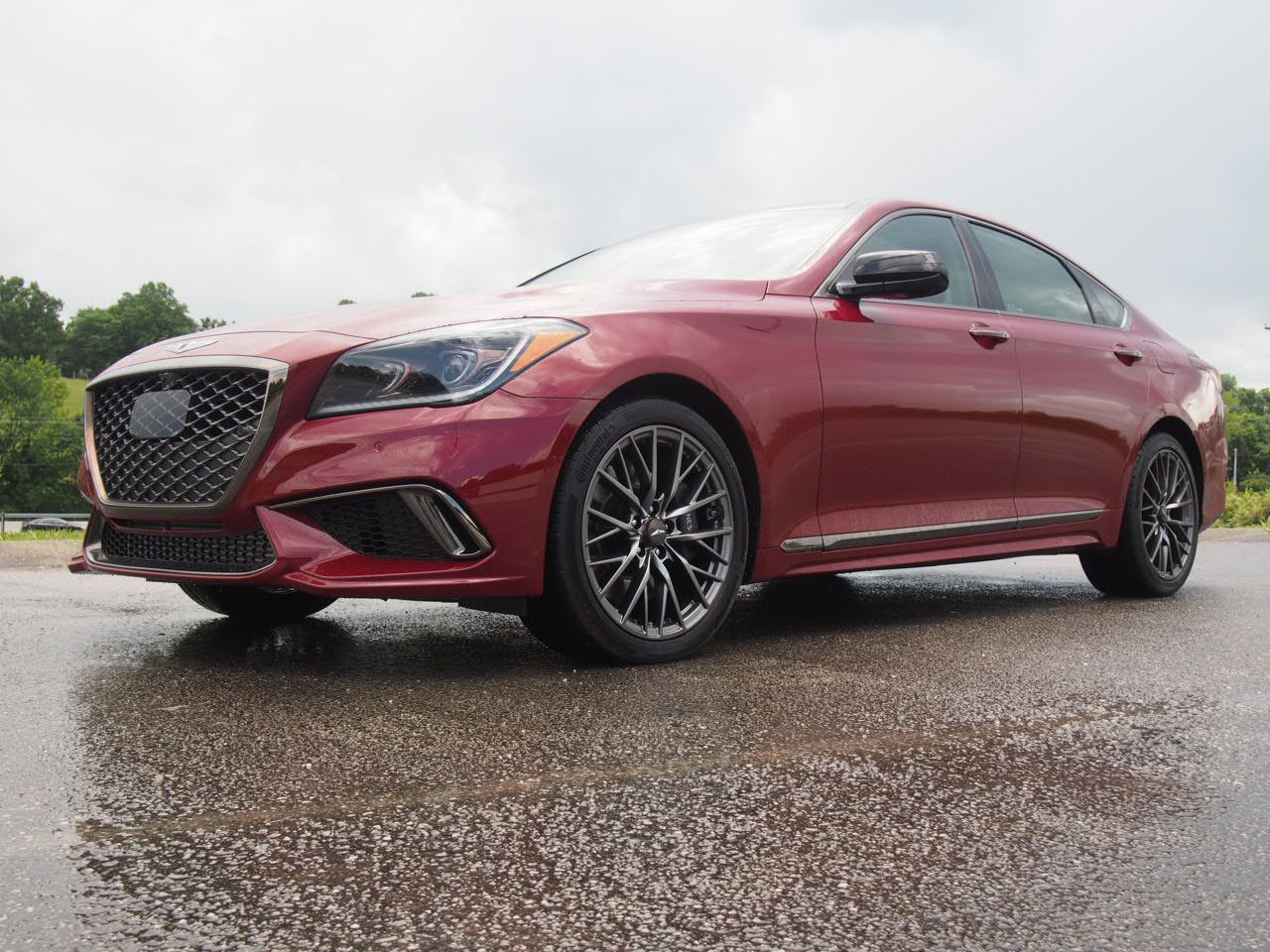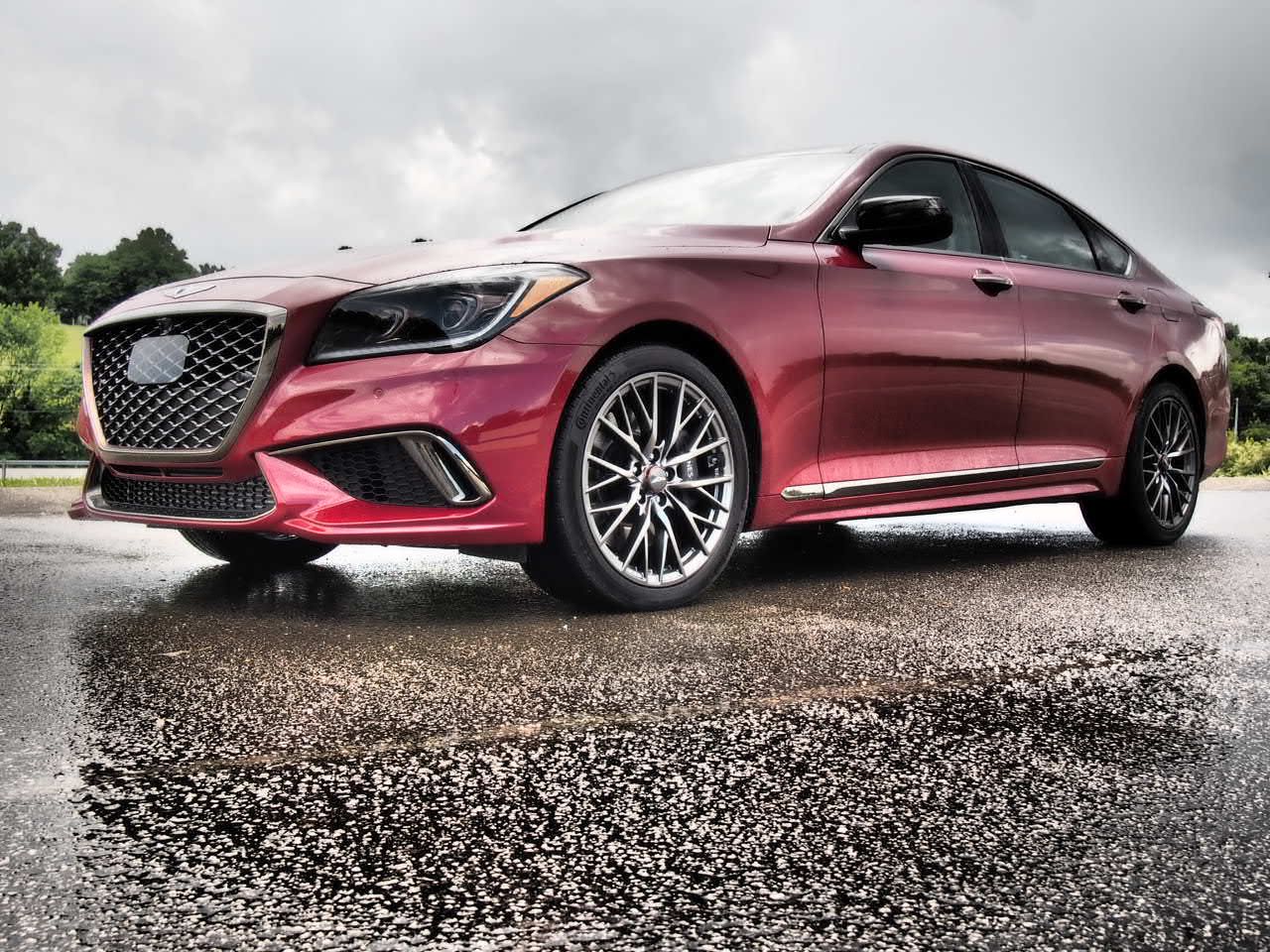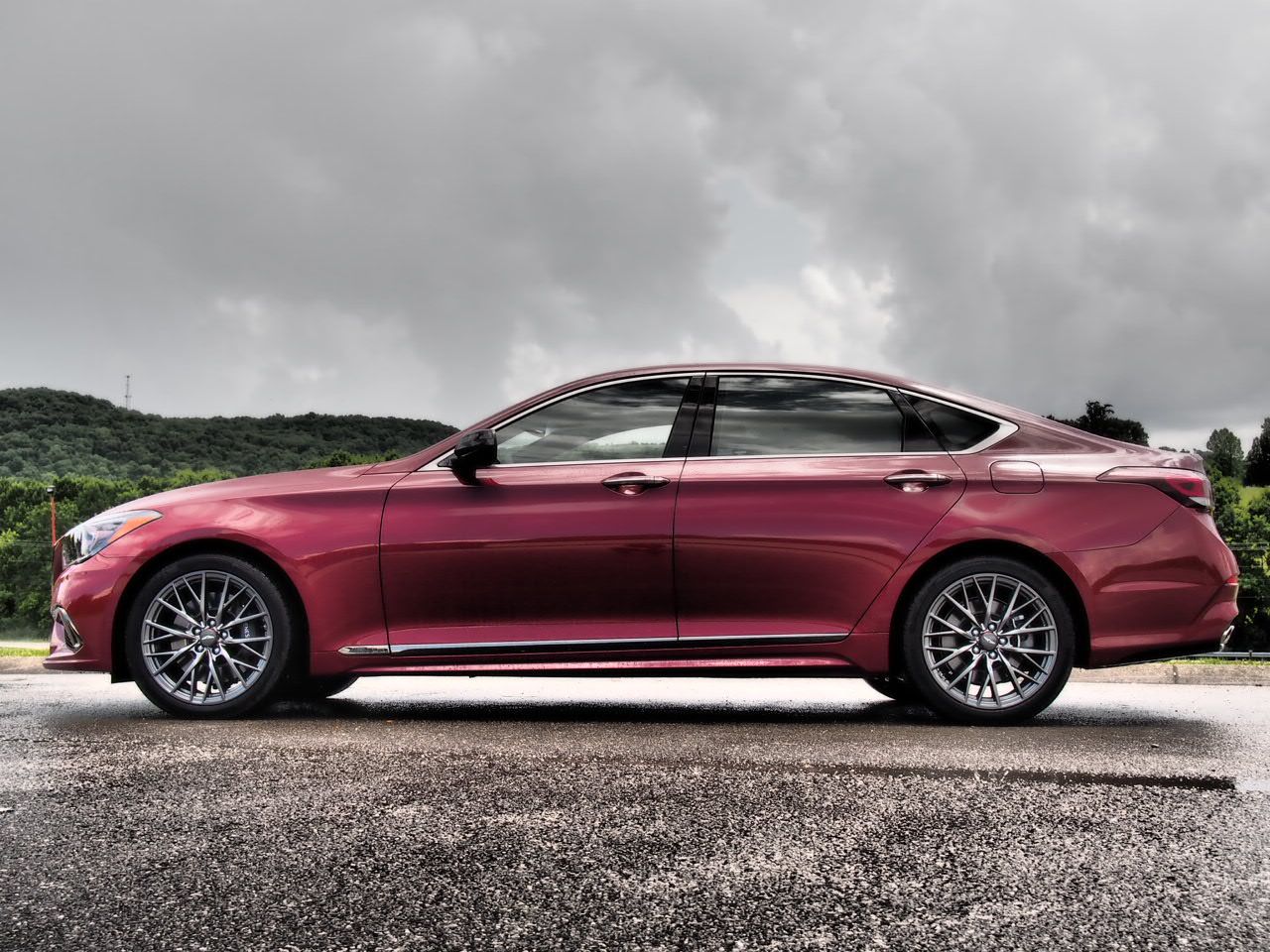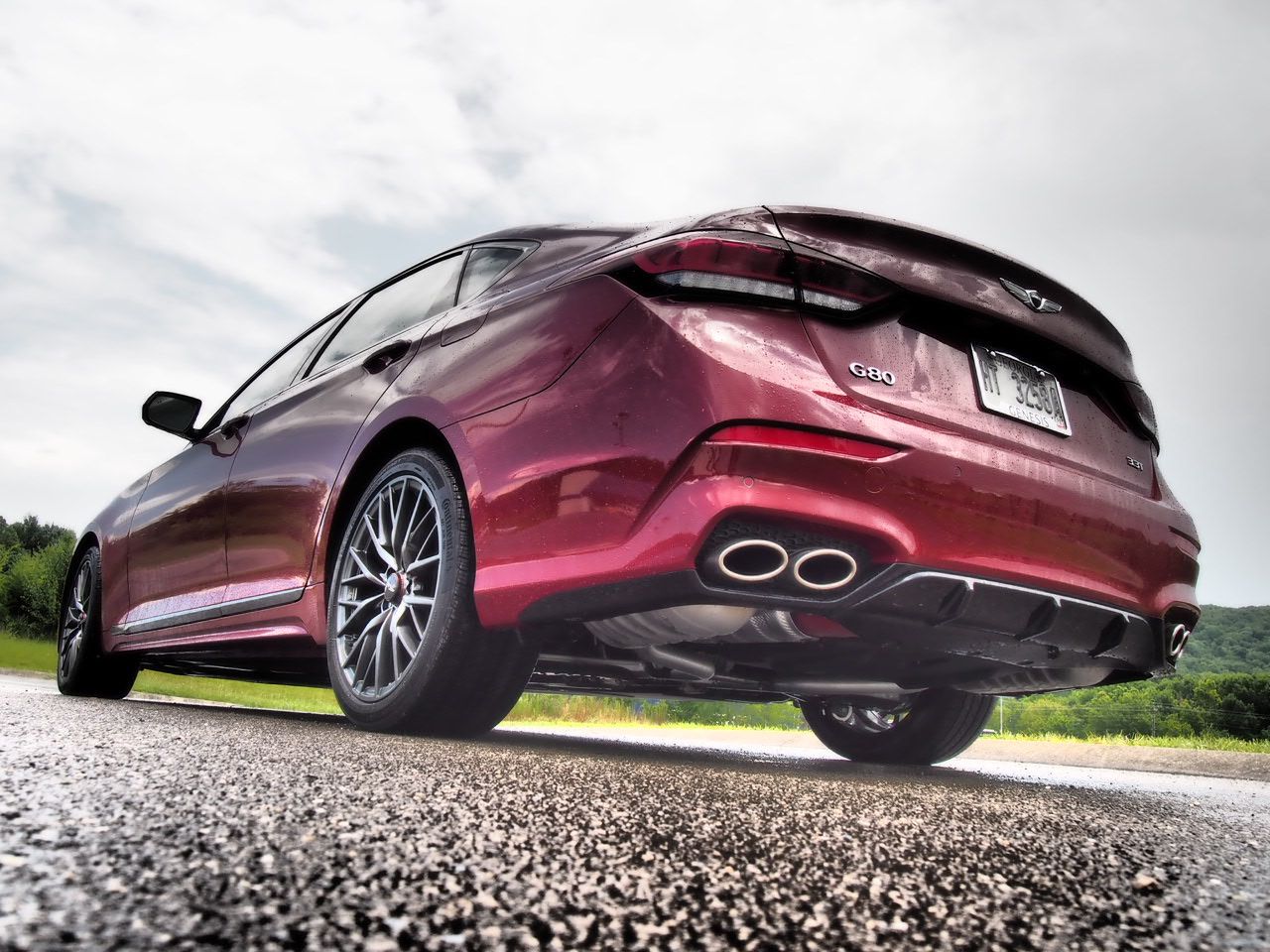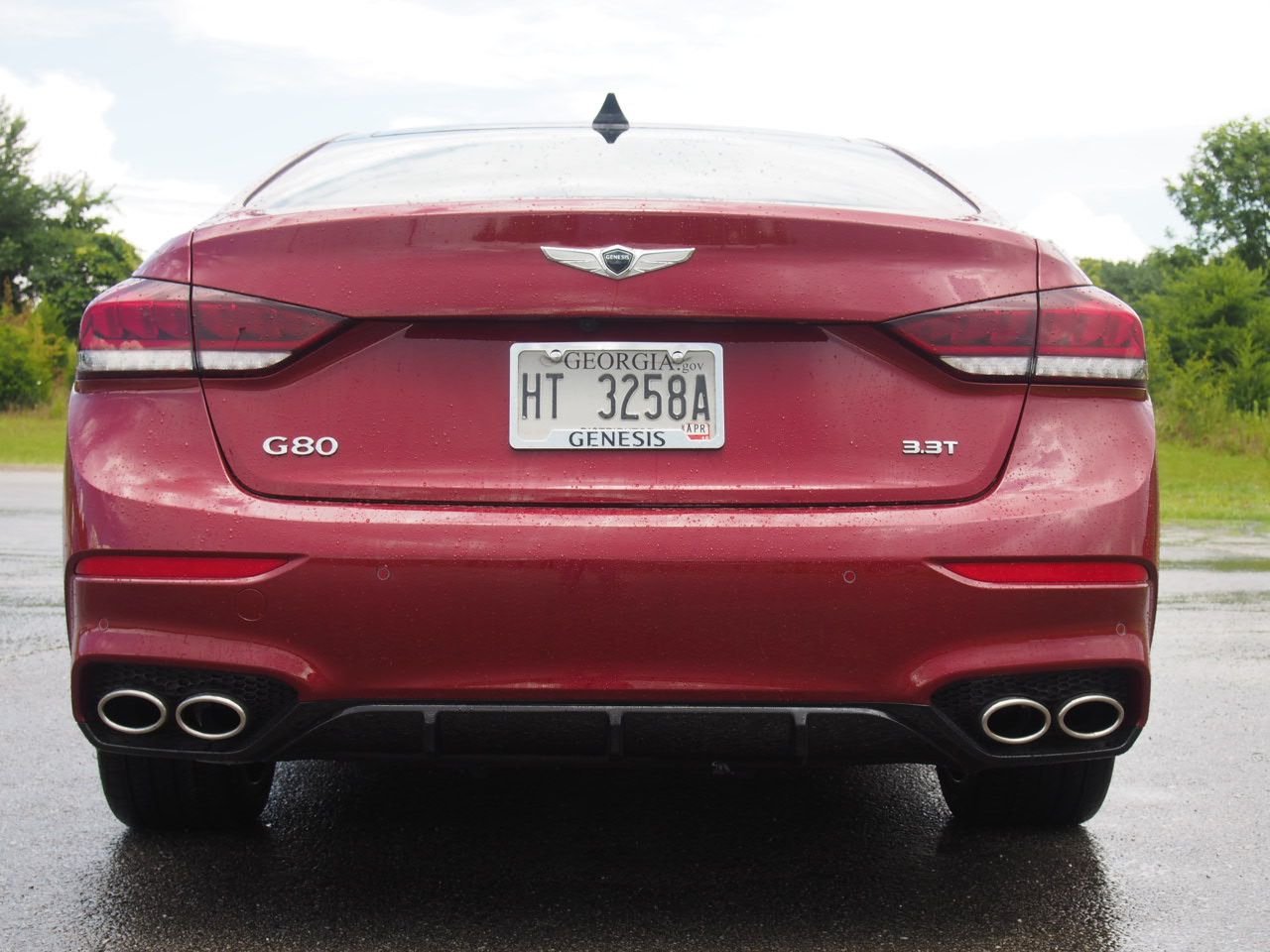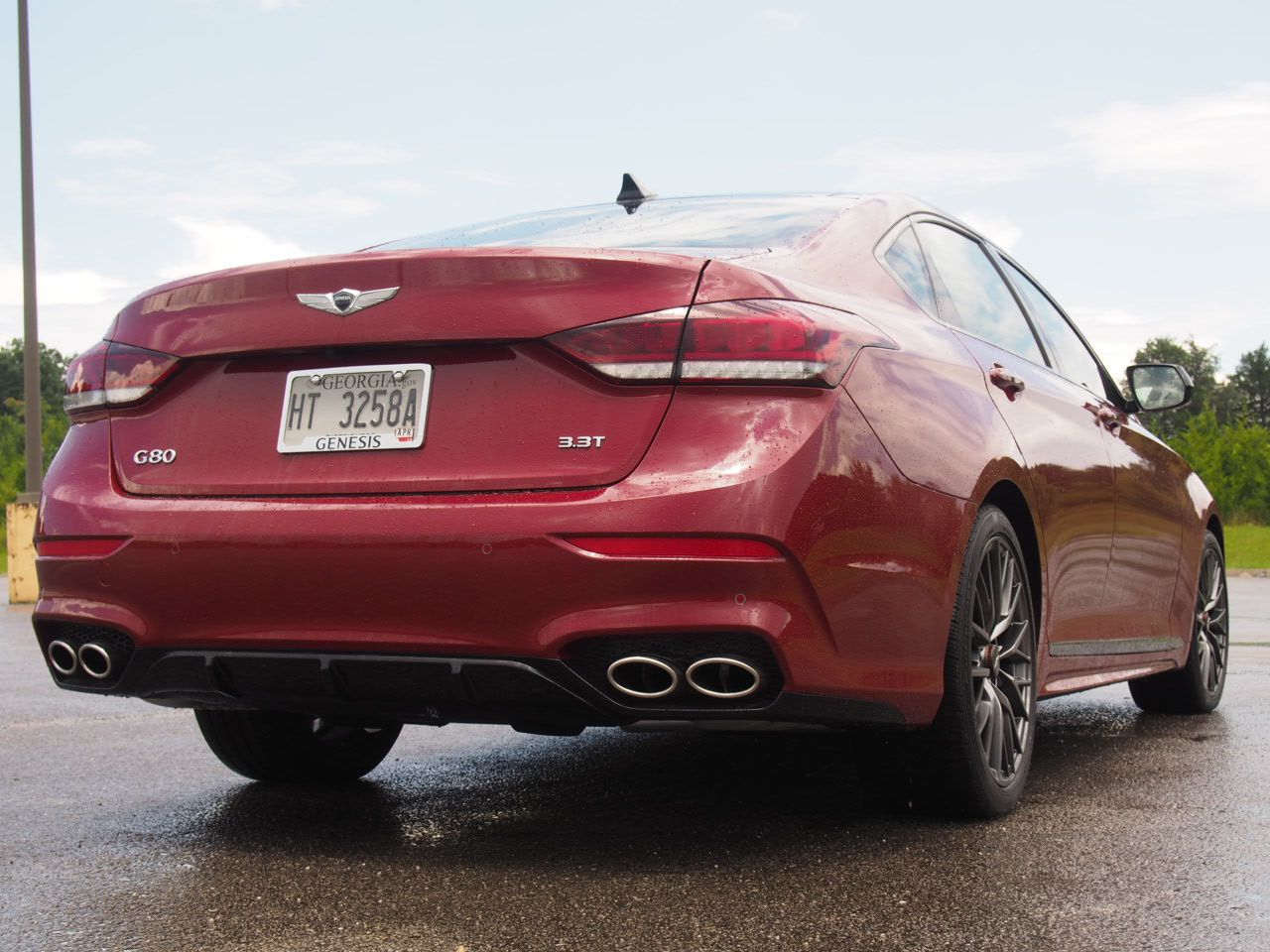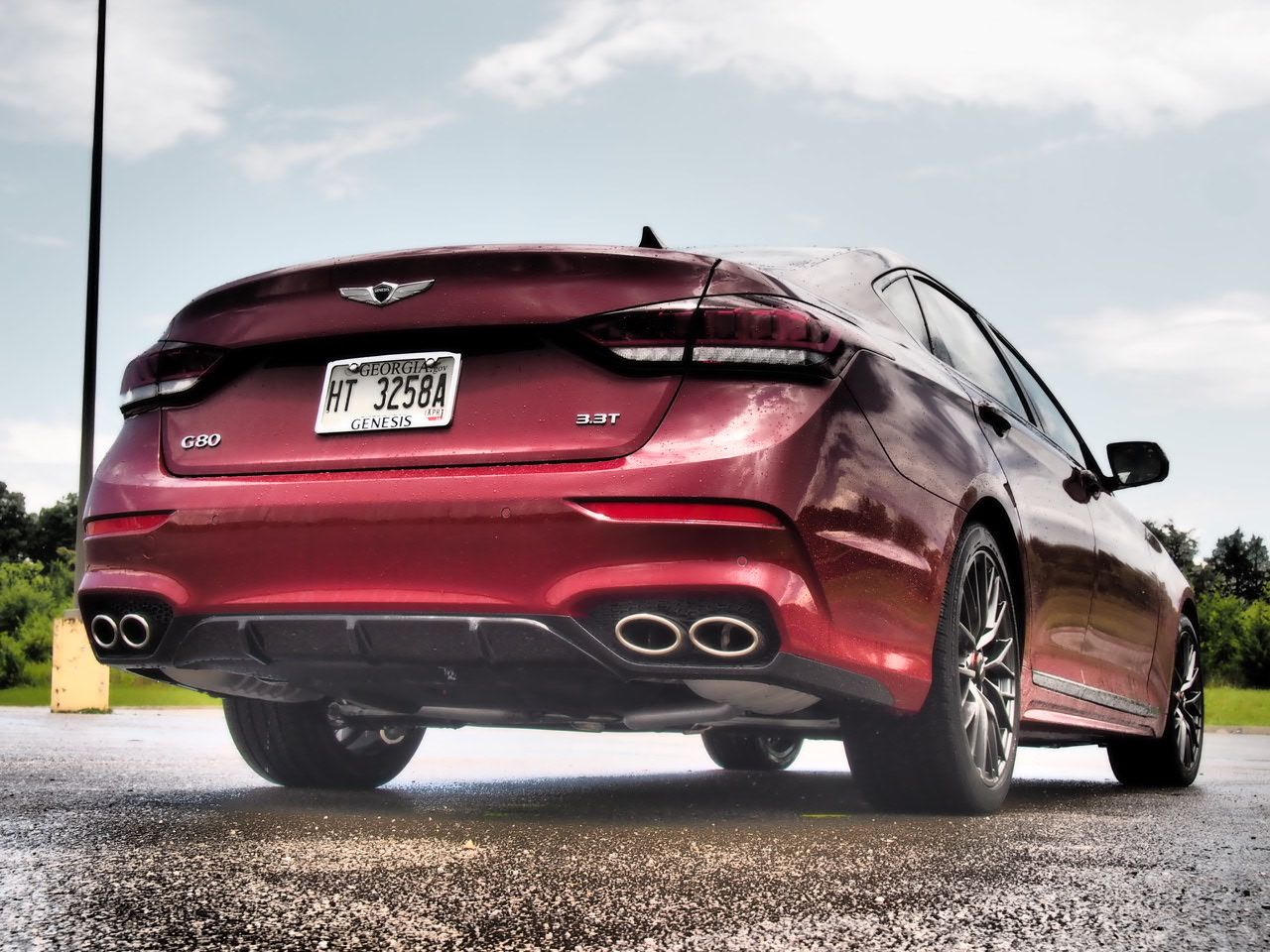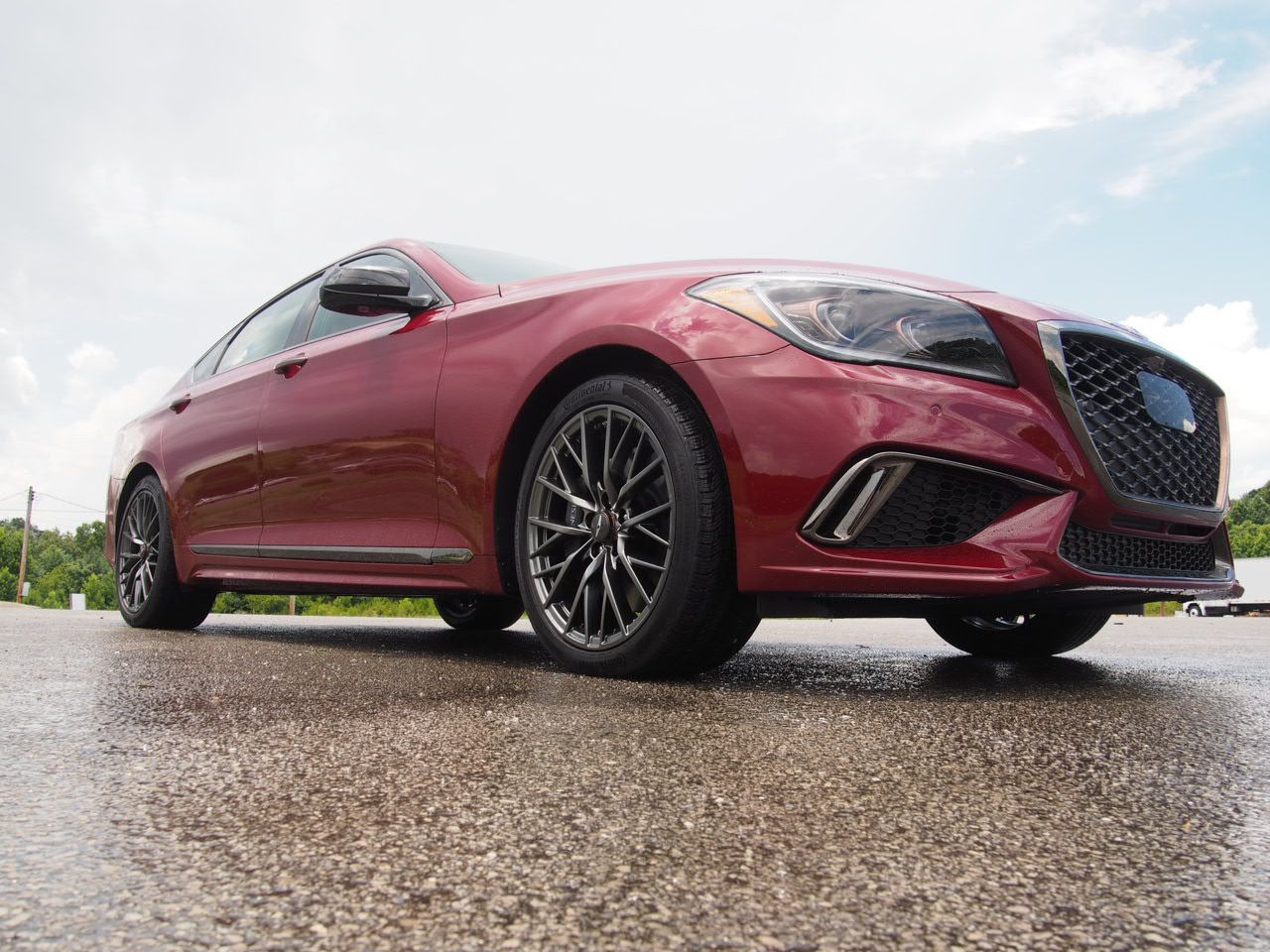Almost 30 years ago, Lexus was where Genesis is today. Toyota was trying to make inroads in the American luxury market with an all-new brand, and there was no shortage of critics doubting its likelihood of success. But they kept making great car after great car, turning the industry on its ear.
In that way, the roadmap has already been laid out for Hyundai as it builds its Genesis luxury marque: Ignore the doubters, and keep building great cars. That’s exactly what they have done with the G90 flagship and its little sibling, the G80 midsize sedan.
For 2018, the smaller G80 comes in three flavors: Standard 3.8-liter naturally aspirated V6 good for 311 horsepower and 293 lb-ft of torque, “Sport” 3.3-liter twin-turbo V6 rated at 365 horsepower and 376 lb-ft of torque, and brawny 5.0-liter naturally aspirated V8 rated at 420 horsepower and 383 lb-ft of torque.
It’s the middle option I’m driving for this review. The G80 Sport impresses as a “just right” mixture of power and refinement -- the “Goldilocks” of G80s.
2018 Genesis G80 Sport
- Make: Genesis
- Model: 2018 Genesis G80 Sport
- Engine/Motor: V6
- Horsepower: 365
- Torque: 376
- [do not use] Vehicle Model: g80
Design Notes
There’s no denying Genesis sedans have a stately appearance.
My test car was finished in beautiful Sevilla Red paint over 19-inch alloy wheels. It made a definite impression everywhere it went. It’s not a gaudy, “look-at-me” luxury car, but it has an understated elegance that does not find itself out of place among the executive car segment. The Sport trim items -- cross-hatch grille, dark chrome exhaust tips, etc. -- added just a hint of muscle to the design.
The front of the G80 looks much like its big sister, the G90. Genesis seems to be taking the Audi school of design here -- and not just because the G80’s grille silhouette bears a slight resemblance to the German brand’s. Like Audi’s sedans, the G80 and G90 demonstrate a “same sausage, different lengths” design philosophy, especially when viewed from the front.
Full LED headlamps and daytime running lights give the G80 Sport its eyes, while dynamic sculpting of the hood hints at muscular performance under there. It’s a smart front design.
Front wheels appear to be pushed out a bit from the doors when viewed from the side, thanks to a slightly concave door surface treatment. The doors aren’t actually concave, but the way they turn under from their mid-point combined with the slightly wider fenders makes them look that way. That’s a great visual trick that makes the G80 look like a solid performer without relying on tacky body-cladding. There’s a little Mercedes-Benz in this, as it’s a trick you can see on the E Class.
The rear design has slightly angry-looking tail lamp modules glaring back at you above those quad exhaust tips. There’s a roof and rear glass profile that’s nearly fastback in nature -- de rigueur in luxury sedans nowadays -- leaving a very short trunk lid surface. That makes it look fast without looking disproportionate.
The interior design is an interesting mix of European and Asian touches. The center stack is topped by a 9.2-inch color touchscreen and very a VW Groupesque HVAC vent design. The shift lever for the G80 Sport’s eight-speed automatic transmission is a “joystick” style that returns to center, and the throttle pedal is attached to the floor -- both things that will be familiar to European car aficionados. But other elements such as the gauge cluster design and the busy controls on the wheel and in the center console infotainment interface are less European and more Asian in nature.
Drive Notes
The G80 experience is definitely worthy of the luxury segment.
Doors close with a quiet, confident sound. The interior ambiance is pure luxury car. Black leather covers almost every surface frequently-touched surface in my G80 Sport test car. Seats have an impressive array of adjustment options, including adjustable bolstering and extendable thigh support. That twin-turbo V6 whirrs to life at the touch of the start button and stays so smooth at idle you could balance a nickel on its edge on top of the engine.
Pulling away from a stop, the Genesis defaults to quiet and comfortable if you don’t have a heavy right foot. It has selectable drive modes for “Eco”, “Normal”, “Sport”, and “Snow”, and in “Normal” mode, its throttle tip-in is nice and linear. “Sport” makes the skinny pedal a bit more aggressive and adjusts the transmission’s shift algorithm to allow for higher revs when accelerating and cornering. “Eco” softens up the throttle and operates the HVAC system more efficiently in the name of conserving fuel.
No matter which drive mode you choose, the 3.3-liter twin-turbo V6 will pull like a freight train if you ask it to. Though it’s down on power to the G80’s optional V8 (365 horsepower vs. 420), the two are much closer in torque (376 ft-lbs vs. 383). And that’s not the whole story, as the twin turbos ensure the G80 Sport’s torque comes on faster and stays on longer than the naturally aspirated V8, peaking in a wide, flat arc between 1,300 and 4,500 RPM compared to the V8’s torque peak at 5,000 RPM.
There was plenty of room in the G80 to haul my family. The “Goldilocks” theme continues in its size, which is considered a “large car” by EPA standards but hews closely to a lot of midsize luxury cars when you measure its exterior footprint.
Four adults could ride in this car in reasonable comfort for a cross-country journey as long as they’re not all long-legged. Overall passenger volume is a generous 107.7 cubic feet -- the reason for that EPA “large car” status. Since we started this review by talking about Lexus, consider this: Their midsize sedan, the GS, has just 99 cubic feet of passenger volume, leading it to feel much more cramped than the Genesis G80 even though legroom and headroom measurements are comparable. (Fair comparison, though: Lexus has more cargo volume in the trunk, with 18.4 cubic feet compared to the G80’s 15.3.)
As luxury cars go, the G80 Sport hit all the targets most luxury buyers would expect of it. It was smooth over the roughest pavement I could find. It was remarkably quiet. Its Lexicon 17-speaker sound system was clear at low volume and positively rocked at higher volume settings. Navigation and infotainment was relatively easy to learn and use, even if I was disappointed in the absence of Android Auto and Apple CarPlay connectivity -- something offered by Hyundais that are less than half as expensive as this Genesis.
Some reviews of Genesis cars knock them for their handling balance not being as sporty as the established players in the segment, mostly thanks to soft suspension tuning and a hefty 4,500-lb curb weight. But I suspect most people who buy a Genesis are more interested in luxury than sportiness. Those who like a sporty drive will probably find plenty to love in the G80 Sport’s combination of stout engine and slightly massaged exterior design, and its brakes and suspension have been altered from standard Genesis models to add a little more sporting character, too.
Overall, the G80 Sport iis a compelling package once you spend some time behind the wheel, particularly when you consider my loaded test car’s all-in MSRP of $56,225.
Competitors
Lexus GS
As noted above, the midsize Lexus GS is among the cars a G80 shopper might consider. While the Lexus feels smaller inside, it’s an athletic sedan with a unique exterior design and a luxurious interior.
I give the advantage to the Genesis G80 for a number of reasons, though. Chiefly, powertrains are better in the G80 lineup. There is no V8 available in your average Lexus GS (upgrade to the GS-F for nearly $85,000 if you want that kind of power), nor is there a Lexus GS with a twin-turbo V6. The bulk of GS sedans you’ll see in dealer inventory are equipped with the naturally aspirated 3.5-liter V6 that makes 311 horsepower and 280 lb-ft of torque. Matched against the base Genesis G80’s naturally aspirated 3.8-liter V6, the Lexus 3.5 might be a contender. But the Genesis twin-turbo 3.3-liter V6 blows it away in terms of refinement and power delivery.
The Genesis has a more practical interior for passenger-hauling, as well. It’s more comfortable to drive with three passengers. The G80’s design isn’t as polarizing as the “spindle grille” era GS, either.
The biggest advantage is price. My G80 Sport test car at $56,225 was fully loaded with every option I could want. Most comparable is the Lexus GS 350 F-Sport, which starts slightly cheaper at $52,060 but quickly rockets past the G80 Sport if I want to add many options the G80 already had standard such as color head-up display, heated steering wheel, SONAR parking assist, a power open/close trunk lid, and LED headlamps. Also, Lexus doesn’t offer the level of safety equipment the G80 offers -- specifically autonomous emergency braking with pedestrian recognition.
Read our full review on the 2017 Lexus GS.
Chrysler 300
This seems like a weird comparison, but park a Genesis G80 next to a same-year Chrysler 300 sometime and it’s clear these are two very distinctive cars that might appeal to similar clientele.
The Chrysler 300 has a lot of American broad-shouldered charm going for it, but the Genesis G80 is equally handsome when seen side-by-side with the 300. The G80 is its equal in most measurements -- and it beats it in the all-important interior metric, where Genesis squeezes out 107.7 cubic feet of passenger volume compared to Chrysler’s 106.3 cubic feet.
True to American luxury cars of yesteryear, the Chrysler 300 can come across a bit more brutish and unrefined than its foreign competition. The G80 walks all over the 300 in terms of ride quality. Also, Genesis has three engines to Chrysler’s two, and they’re all smoother -- but not necessarily better -- than the engines you’ll find under the bonnet of the big Chrysler.
But the 300 has the edge when it comes to handling and road feel, and its big HEMI V8, while down on power to the available V8 in the G80 (363 horsepower vs. 420), is a torque monster that out-torques the G80’s V8 (394 ft-lbs vs. 383) and makes all the right sounds. For those who have a thing for muscle cars, the 300 has strong appeal.
The G80 makes a lot of sense if you’re shopping for a bargain, but if that’s the case, the Chrysler 300 might make even more sense. A V8-powered Chrysler 300C starts at about $41,000 compared to the $57,000 MSRP on the V8-powered G80 -- and that’s before the typical large discounts offered by many Chrysler dealers. That makes the V8-powered 300 a solid deal even when compared to our G80 Sport with its twin-turbo V6. And if fuel economy puts you off the idea of a big American V8, consider that the Chrysler 300’s 25 MPG highway EPA rating is the same as the highway rating EPA gave my Genesis G80 Sport.
I’d call the Chrysler 300 a dark horse candidate for anyone shopping G80 and its competitors.
Read our full review on the 2017 Chrysler 300.
Mercedes-Benz E-Class
Here may be the Genesis G80’s closest competitor. German-car fanboys may be scoffing at that suggestion, but I think this is exactly the car Genesis had in mind when designing the G80. As noted above, the exterior design has elements of Mercedes-Benz E Class. When you look at the measurements of both cars, they’re very closely specced.
The E Class comes away with a slight advantage in rear-seat legroom, but only because the G80 has a lot more front-seat legroom. In all other interior dimensions, the cars are within an inch or two of each other. The exterior is much the same story, with Genesis just barely exceeding the Merc’s footprint thanks to a slightly longer wheelbase and wider track.
Engines are more directly comparable here than in the other two competitors above. Mercedes offers a slick 3.0-liter twin-turbo V6 that is slightly less powerful than the G80’s 3.3. The trade-off is the Merc gets slightly better fuel economy ratings -- the Genesis gets a 17/24 city/highway MPG rating from EPA, while the E 400 is able to eke out 20/27 city/highway ratings.
One distinct advantage Mercedes-Benz offers: The E 400 comes only in 4MATIC all-wheel drive trim. Another distinct advantage: It’s available in wagon form, while the G80 is only offered as a sedan.
In true German fashion, option pricing can easily place the E Class well beyond my tested G80 Sport’s $55K price point. But the two have almost identical base prices. Depending on how much equipment you want, you might find the Merc more appealing.
Read our full review on the 2017 Mercedes-Benz E-Class.
Conclusion
Genesis knows it has a lot of work to do if it wants to impress would-be Mercedes buyers. Not only does the car have to be outstanding, but so does the ownership experience.
That’s why Genesis offers valet pick-up and drop-off for maintenance appointments, all of which is complimentary for three years or 36,000 miles, whichever comes first. That should win over a few would-be Chrysler 300 and Lexus GS buyers, too. It’s a level of personal service none of the above competitive manufacturers offers at the time of this writing.
Perhaps Lexus could have sped up the curve of its mainstream acceptance in the early ‘90s if it had offered that level of customer service. Time will tell whether Genesis requires the better part of a decade to start being taken seriously by luxury car shoppers, as was the case for Lexus. These are early days for the two-year-old marque.
But I don’t need time to determine whether Genesis has its act together when building a luxury car. The G80 proves that Korea is swinging for the fences, and that the luxury car establishment had better be paying attention.
Disclosure: Genesis provided the vehicle, insurance, and a tank of fuel for this review.
References
Genesis G80
Read our full review on the 2018 Genesis G80.

